- Tips & advice

Cruise control and adaptive cruise control: the complete guide
Cruise control is a great extra to have if you do regular motorway journeys, while adaptive cruise control arguably makes even more sense.

What is cruise control? Cruise control is an electronic system that automatically regulates a car's speed without the driver having to keep their foot on the accelerator. That's the simple answer, but today car manufacturers are adding ever-more advanced cruise control systems to their models, all designed to make driving easier and safer, while many of the newer technologies are on the first tentative steps towards autonomous vehicles .
Once upon a time, cruise control was the preserve of high-end luxury cars, but as the technology has become more affordable, car makers have rolled it out on more mainstream models. Today, you can get it on even the smallest city cars , while other models get a proprietary speed limited system that requires a bit more input from the driver.
• What is AEB?
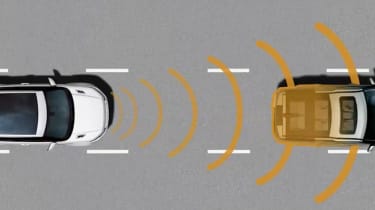
Elsewhere, the progress of technology means that car makers have been able to develop adaptive cruise control (ACC) systems that can vary a car's speed according to traffic, while the most advanced systems are on the steps towards fully autonomous driving.
Here we explain how cruise control works and break down the different kinds of system on offer, highlighting their advantages and limitations, so you can decide if it's an option that's worth ticking on your next new car purchase.
Cruise control history
Cruise control can trace its origins back to the 17th and 18th century, when engineers developed 'speed control' systems for steam engines. These mechanical systems were adapted by some early automobile makers at the start of the 20th century, although the predecessor to modern cruise control didn't appear until the 1950s.
The first car to feature cruise control was a 1958 Imperial, which was Chrysler's luxury division. Called 'Auto-pilot', the system was mechanical and was connected to the engine propshaft. It had a dial on the dashboard to preselect a speed and an electric motor that adjusted throttle position to maintain it.
US firm American Motors produced a budget version of cruise control for its automatic cars in 1965, but cruise control really took off in the US during the oil crisis of 1973. Manufacturers had developed electronic cruise control systems by this time, and these makers promoted the benefits of the system as it delivered constant throttle inputs, rather than the erratic flexing of the driver's right foot for improved fuel economy.
• What is horsepower?
Cruise control found popularity in the US first because of that nation's fondness of automatic gearboxes, long travelling distances and the relatively straight and wide highway network. In Europe, cruise control took a little longer to gain a foothold, but like the US, it first appeared on high-end luxury cars before filtering its way down to more mainstream models.
The first adaptive cruise control (ACC) system appeared in Japan in the early 1990s, although the first systems simply warned the driver of slower traffic ahead, and didn't control the car's throttle or brakes.
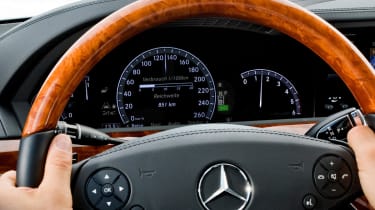
The first proper ACC system was Mercedes ' Distronic system, which appeared on the S-Class limousine in 1999. This system not only controlled the throttle, but also the brakes to maintain a set distance to the vehicle in front.
Since then, car makers have embraced ACC, and it can be found on superminis , hatchbacks and sports cars , while the rising level of traffic on our roads means it's arguably a more useful feature than standard cruise control on its own, as it can adjust speed according to traffic flow.
• What is 4x4? All-wheel-drive systems explained
How does cruise control work?
Modern cruise control systems are integrated into a car's electronics, and are often combined with additional tech, such as lane departure warning and blind spot sensors. With standard cruise control, you need to select cruise mode via a switch, then accelerate to your desired speed, and press a button – either on the steering wheel or on a lever on the steering column - to set that speed.
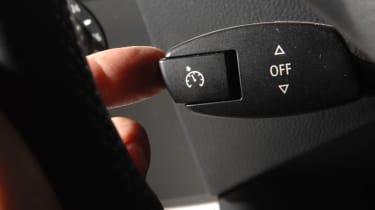
The car's electronics then maintain your selected speed, so you can take your foot of the accelerator. On some cars you can adjust your speed via a button, and the car will automatically change its speed accordingly.
On a car with adaptive cruise control (ACC), you switch on the system, then you can raise or lower your speed as desired, and the car will accelerate to that set speed. These systems use either radar or laser sensors to maintain a set distance to the car in front, and they also have the ability to increase or decrease that distance as required.
To deactivate cruise control, you simply press a button to regain control of the throttle. However, one important safety feature that all of these systems are required to have is that the system will immediately deactivate if the car's brakes are applied. On cars with a manual gearbox, pressing the clutch pedal will sometimes have the same effect, although not all cars behave in the same way. Most cars will have a memory function, so that you can resume the same speed after the brakes have been applied.
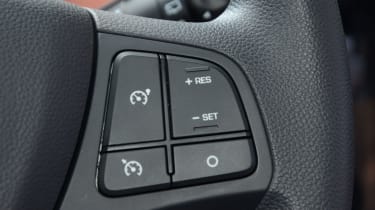
Earlier cruise control systems would have a lower speed threshold of around 20-30mph where cruise control couldn't be activated, and some manufacturers still maintain this set-up. However, some of the latest ACC systems also incorporate a traffic function, so they can operate in stop-start conditions.
Cruise control types
Essentially there are four types of cruise control on offer, ranging from the most basic speed limiter to systems that can negotiate stop-start traffic and even change lanes. We look at the benefits and disadvantages of each below.
Speed limiter
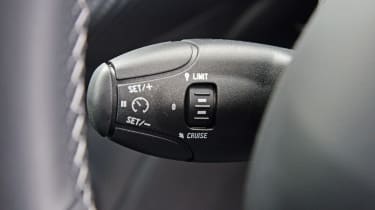
What is it? The most basic form of cruise control. There are systems that can be hard-wired into a vehicle to limit its top speed (a 70mph limit in vans, for example), or there are driver-activated systems. You can set a maximum speed for your vehicle, but you maintain control of the car's accelerator at all times. When you approach your set maximum, the car will simply stop accelerating. This will usually happen softly, so you'll barely notice.
Found on: Citroen, Ford, Nissan, Peugeot, Renault, vans, can be added aftermarket, too. Advantages: Helps you stick to speed limits, saves fuel. Disadvantages: Driver has to continue using the throttle to maintain speed.
Cruise control

What is it? Standard cruise control is a fairly common feature on new cars. You turn the system on (usually indicated by a graphic on the dashboard), then once you're up to your desired speed, you press a button to set it, and the car maintains that speed.
Found on: Most mainstream new cars, except for the most basic trims. Advantages: Takes strain out of long drives, more fuel efficient than using the accelerator manually, helps you stick to speed limits. Disadvantages: Driver has to take over when traffic slows, only worth using on clear motorways.
Adaptive cruise control
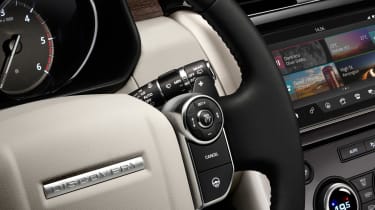
What is it? Either a radar or laser-based system that can maintain speed, but reduces speed if the gap to the car in front falls below a preset distance. This constitutes Level One automation on the automated vehicle classification chart, as they driver is required to take control at any time.
Found on: Assorted BMW, Fiat group, Ford, JLR, Lexus, Mercedes, VW Group models, and increasing in use by other makers. Advantages: Adjusts speed according to traffic, takes strain out of long drives, helps fuel efficiency. Disadvantages: Sensors can be 'blinded' in bad weather, electronics can be slow to react to sudden traffic slowing, distance to the car in front can be big enough to tempt other drivers to cut in front of you, sometime systems are jerky when changing speed.
Semi-autonomous cruise control
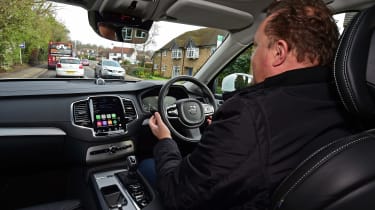
The latest hi-tech cruise control systems are one step closer to the fully autonomous self-driving car, and are classed as Level 2 automation. This means the automation can control the throttle, brakes and steering, but the driver still needs to intervene if the systems fail to detect objects. Semi-autonomous systems can vary in sophistication, and can help with steering inputs, move in stop-start traffic, or even change lanes on the motorway with the flick of an indicator, or adjust the car's speed according to GPS data and road sign recognition cameras.
Found on: Audi A3 /A8/Q7, BMW 7 Series , Mercedes S-Class , Volvo XC90 Advantages: Takes strain out of driving and traffic jams, helps fuel consumption. Disadvantages: Sensors need to be kept clear for it to work, too easy for driver to 'switch off' and lose concentration.
Do you have cruise control or adaptive cruise control on your car? Do you use it? Let us know what you think of the technology in the comments...
Dean has been part of the Auto Express team for more than 20 years, and has worked across nearly all departments, starting on magazine production, then moving to road tests and reviews. He's our resident van expert, but covers everything from scooters and motorbikes to supercars and consumer products.
Most Popular
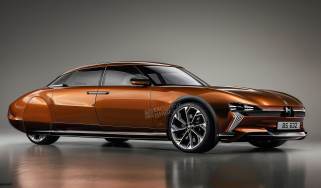
Ooh la la: new DS flagship to get inspiration from world’s coolest car
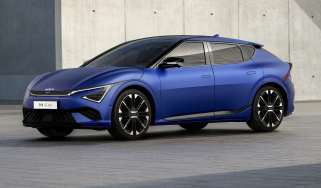
Kia EV6 gets bigger battery, interior upgrades and EV9-inspired facelift
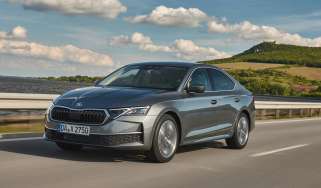
New Skoda Octavia 2024 facelift review: updates strengthen a strong hand
Demystifying Adaptive Cruise Control: A Comprehensive Guide
As an auto tech expert and self-driving car enthusiast, I often get asked about Adaptive Cruise Control (ACC) and how exactly it works to automatically adjust your car‘s speed. ACC is one of the coolest semi-autonomous technologies available today, making highway drives safer and less stressful. But it‘s also complex under the hood!
In this comprehensive guide, I‘ll give you an in-depth look at ACC – how it works, different types, key benefits, limitations, and what the future holds for adaptive cruise and autonomous driving.
ACC 101 – Adjusting Speed to the Car in Front
ACC uses radar, laser sensors or cameras to monitor the vehicle ahead and adjust your speed accordingly to maintain a preset following distance. If the vehicle in front slows, so does your car – automatically! ACC reduces the constant manual braking and acceleration required in heavy traffic.
Here‘s a quick ACC capability comparison:
ACC delivers a major safety and convenience upgrade from old cruise control technology first introduced in the 1950s. Let‘s look under the hood at how ACC performs this speed adaptation trickery…
ACC Sensor Technology – Radar vs. Laser vs. Camera
ACC systems rely on forward-facing sensors to detect the speed and distance of vehicles ahead. Most ACC systems use radar (radio waves), while some premium vehicles use laser sensors or cameras paired with image processing. Here‘s how each sensor approach works:
Radar Adaptive Cruise Control
- Uses radio waves in the 24 GHz or 77 GHz frequency bands
- Excellent range (160m+) and unaffected by weather
- Distributed beam provides wide field of view
- Cannot identify shape and classification of objects
- Overall the most robust and widely adopted ACC technology
Laser Adaptive Cruise Control
- LIDAR (Light Detection and Ranging) laser sensors
- Very high resolution and accuracy
- Narrow, focused beam with longer range than radar
- Performance impacted by weather and dirt
- Limited adoption due to higher cost
Camera-Based Adaptive Cruise Control
- Uses front-facing camera and video processing
- Can visually identify vehicles braking ahead
- Shorter effective range with narrow field of view
- Limited use for ACC, better for lane centering
Radar ACC is the most common since it combines long range, wide scanning angle, with reasonable cost. However, some automakers like Toyota and BMW use both radar and cameras to complement each other.
Real World ACC Performance
In optimal highway conditions, ACC works exceptionally well to adapt your vehicle‘s speed based on traffic ahead. However, ACC has limitations that require driver supervision:
Following distance – Most systems allow setting 1,2 or 3 second gap to car ahead. Younger drivers tend to prefer the risky 1 second gap!
Cut-ins – When a vehicle changes lane in front, ACC response can be delayed
Curves & hills – Around blind turns or over hills, performance drops as radar line-of-sight is lost
Bad weather – Heavy rain, snow, and fog degrade radar and laser sensor effectiveness
Bright light – Low sun angles and bright reflections can overwhelm camera sensors
Small objects – Most ACC systems have trouble consistently detecting motorcycles, bicycles, pedestrians
While ACC has its limits, it‘s remarkably helpful day-to-day in reducing driver burden. But expect some occasionally quirky behavior so you‘re not caught off guard!
ACC Availability Across Vehicle Makes
ACC technology premiered in 1992, but only became popular on luxury cars in the early 2000s. ACC is now commonplace across all major auto brands:
And it‘s a standard feature on most luxury vehicles:
With so many automakers offering ACC, it‘s now an expected convenience feature for car buyers.
Comparing OEM Adaptive Cruise Systems
While ACC capabilities are similar across brands, there are some notable differences between automaker systems:
Mercedes-Benz Distronic
- Industry-leading ACC technology since introduced in 1998
- Uses long-range 77 GHz radar + stereo cameras
- Capable of full stop-and-go operation
- Automatically adjusts speed for curves and junctions
GM Super Cruise
- Camera + radar ACC combined with precision GPS mapping
- Enables hands-free driving on limited access highways
- Driver attention monitoring via face tracking camera
Nissan ProPilot Assist
- Budget ACC + lane centering system
- Smooth performance but more limited capability
- Delayed responses compared to premium systems
Toyota Dynamic Radar Cruise
- Lower speed operation down to 25mph
- Conservative speed adjustment when following
- Prone to leaving large gaps in traffic
Overall Mercedes sets the benchmark for ACC performance and capability in my opinion, with German automakers continuing to lead the way.
Adding ACC to Older Vehicles
You don‘t need to buy a new car to experience ACC convenience. There are aftermarket ACC systems available to add radar-based speed adaptation to older vehicles:
Comma Two : $1100 standalone ACC system powered by camera and radar sensors. Installs by connecting directly to vehicle CAN bus. Impressive capabilities given aftermarket nature.
Autocruise : $2500 ACC system requiring professional installation. Uses front camera and radar sensors. Provides ACC + lane centering.
RoadMate : $1800 radar-only ACC system. Easier self-install with OBDII plug-in. But limited braking capability.
Aftermarket systems provide a taste of ACC and advanced driver assist capabilities. But overall, OEM automaker ACC integration delivers a smoother and more reliable driver experience.
The Road to Fully Autonomous Driving
A key benefit of ACC systems is paving the way for fully autonomous self-driving vehicle (SDV) technology. The cruise control computers, radars, and cameras ACC relies on provide the foundational sensing and actuation building blocks for SDVs.
Here are some of the key ACC enhancements feeding into full autonomy:
Improved camera imaging – Higher resolution, HDR, night vision, wider field of view
Sensor fusion – Combining radar, camera and ultrasounds for 360 degree coverage
Tighter vehicle integration – Braking and steering authority expanded beyond ACC
Detailed 3D mapping – Ultra-precise maps enable self-driving without relying solely on sensors
V2X communication – Sharing intent and sensor data with nearby vehicles, infrastructure
Redundant systems – Backup sensors, computers, and actuators to maximize safety
The big challenge is mastering full self-driving in complex urban environments. While ACC handles long boring highway drives, crowded city streets require an entirely new level of autonomous driving expertise.
Optimizing ACC for the Future
As an auto tech expert, I see great potential ahead for ACC technology. But there are also improvements I‘d love to see:
Quicker reactions – Faster stopping when vehicle cuts in front
All speed operation – ACC availability even in start-stop traffic
Improved object detection – Identifying pedestrians, cyclists, animals
Left/right radar – Side-facing sensors to monitor blind spots
Personalization – Driver tailored ACC preferences and profiles
Intuitive controls – Simplifying overly complex ACC settings menus
Seamless transitions – Handoff between ACC, lane centering and parking systems
Driver monitoring – Alerts for distraction and loss of attention
With future refinement, ACC can move beyond just being a convenience feature and provide truly safe semi-autonomous driving.
Challenges Facing Consumer ACC Adoption
Despite the benefits of ACC, there are still barriers to mass consumer adoption:
Cost – Only available on higher trim models outside budget for many car buyers
Trust – Drivers underestimate capabilities and effectiveness of ACC
Complexity – Many settings overwhelm drivers new to the technology
Reliability – Sensor degradation and performance concerns over vehicle lifetime
Education – Lack of ACC training for consumers
Addressing these challenges will be key for ACC to transition from a luxury feature to a standard capability that drivers actually use day-to-day.
Testing and Validating Adaptive Cruise Systems
Before ACC systems hit the road, automakers put them through rigorous testing to ensure safety:
Hardware-in-the-Loop – Validating ACC sensor + ECU integration
Test track assessment – Repeated runs observing ACC capability in action
Scenario testing – Emulating cut-ins, curved roads, weather effects
Naturalistic driving – Recording ACC use in real uncontrolled driving
Simulation – Modeling ACC components and logic virtually
Public road testing – Validation in early prototype vehicles
Safety audits – Third-party review of ACC functionality
Months of testing provides confidence in ACC operation. But it‘s impossible to evaluate every edge case scenario an ACC system may encounter once on the road.
Insider ACC Troubleshooting Tips
To dig deeper into ACC, I connected with Sam who works on ACC radar sensor calibration at General Motors. He shared some pro tips on troubleshooting ACC issues:
"One problem we see is radar misalignment that prevents ACC from detecting vehicles ahead accurately. This can occur if the radar or front bumper gets even slightly shifted, say due to a minor collision. I recommend first visually inspecting the radar position and realigning if necessary. Also watch out for mud or snow buildup around the sensor which can block radio waves."
"Software bugs are another ACC gremlin, like incorrect gap distance or delayed braking. But these can often be remedied with an ECU update at the dealership. And make sure the windshield in front of the camera is squeaky clean for camera-based systems! Dirty glass is an easy pitfall."
So when ACC acts up, check for sensor obstructions, misalignment, and also ask your dealer to verify the latest software is installed.
I hope this ACC deep dive has helped shed light on how this clever technology works and what the future holds. Let me know if you have any other ACC questions!
How useful was this post?
Click on a star to rate it!
Average rating 0 / 5. Vote count: 0
No votes so far! Be the first to rate this post.
Share this:
You may like to read,.
- Why is $2 Good Luck? Digging into the Quirky History and Lore of the $2 Bill
- How Do I Switch to NA Servers? The Ultimate Guide for Ping Lovers
- What Does it Mean When a Symbiote is Red?
- Hey friend, let‘s settle this – are Rabbids good or evil?
- Why is stealing a car called Grand Theft Auto?
- Using USB SuperSpeed for Monitor Connectivity – An In-Depth Guide
- Is 4GB RAM 64GB Good Enough in 2024?
- What is an Omega Slick? The Complete Expert Guide

Ad-free. Influence-free. Powered by consumers.
The payment for your account couldn't be processed or you've canceled your account with us.
We don’t recognize that sign in. Your username maybe be your email address. Passwords are 6-20 characters with at least one number and letter.
We still don’t recognize that sign in. Retrieve your username. Reset your password.
Forgot your username or password ?
Don’t have an account?
- Account Settings
- My Benefits
- My Products
- Donate Donate
Save products you love, products you own and much more!
Other Membership Benefits:
Suggested Searches
- Become a Member
Car Ratings & Reviews
2024 Top Picks
Car Buying & Pricing
Which Car Brands Make the Best Vehicles?
Tires, Maintenance & Repair
Car Reliability Guide
Key Topics & News
Listen to the Talking Cars Podcast
Home & Garden
Bed & Bath
Top Picks From CR
Best Mattresses
Lawn & Garden
TOP PICKS FROM CR
Best Lawn Mowers and Tractors
Home Improvement
Home Improvement Essential
Best Wood Stains
Home Safety & Security
HOME SAFETY
Best DIY Home Security Systems
REPAIR OR REPLACE?
What to Do With a Broken Appliance
Small Appliances
Best Small Kitchen Appliances
Laundry & Cleaning
Best Washing Machines
Heating, Cooling & Air
Most Reliable Central Air-Conditioning Systems
Electronics
Home Entertainment
FIND YOUR NEW TV
Home Office
Cheapest Printers for Ink Costs
Smartphones & Wearables
BEST SMARTPHONES
Find the Right Phone for You
Digital Security & Privacy
MEMBER BENEFIT
CR Security Planner
Take Action
Guide to Adaptive Cruise Control
How this convenience feature works to reduce your stress on long drives
Adaptive cruise control (ACC) is like traditional cruise control, but smarter. ACC systems allow you to set a desired speed until your vehicle encounters slower-moving traffic. Then it will brake to maintain a set distance from the car ahead. Once the traffic starts moving again or if there is no longer a car in the lane ahead, ACC will accelerate to resume the previous set speed. Although ACC systems may take some getting used to, our survey respondents told us they appreciated the stress relief the feature brings.
“I use the feature mostly on the freeway and in stop-and-go traffic. I find it reduces tension and fatigue,” wrote a 2020 Subaru Outback owner. A 2018 Audi Q5 driver agreed. “It is so nice to just set it and let the car worry about the traffic,” they told CR.
The systems use lasers, radar, cameras, or a combination of those. If traffic slows to a stop, most ACC systems will bring the car to a complete stop, then bring it back up to speed when traffic gets going again. Others work only within certain speeds and/or might not start to accelerate automatically.
Adaptive cruise control (ACC): Cruise control that also assists with acceleration and/or braking to maintain a driver-selected gap to the vehicle in front. Some systems can come to a stop and continue while others cannot. If the car comes to a full stop, you may have to press the accelerator or a button on the steering wheel to start moving again.
Not all systems work at low speeds, so drivers who plan to use ACC in slow traffic should check the limitations of any system they plan to buy. These particular systems will often have the words “traffic jam” or “stop and go” in their name.
These features are usually activated using a button on the steering wheel with the image of a car next to a speedometer with an arrow pointing at it. A conventional cruise control system does not automatically keep a set distance away from the car in front, and it is indicated by a similar logo without the car next to the speedometer. A tip to know if your car has adaptive cruise control or regular cruise control is to look for the “gap distance” button, which usually shows a symbol of a car with horizontal distance bars in front. This button will determine how much space your car leaves between its front bumper and the rear of the car it is following.
In our most recent survey, we asked CR members to rate their experiences with the advanced safety and driver assistance systems on their model-year 2017 to 2022 cars. Respondents answered questions about their satisfaction with the systems. The survey covered about 47,000 vehicles. Most respondents told us they were “very satisfied” with ACC. Satisfaction was higher for older drivers.
OVERALL SATISFACTION
What to Look For in an Adaptive Cruise Control System
Every ACC system works slightly differently, says Kelly Funkhouser, manager for vehicle technology at CR. Some do a better job than others at recognizing merging traffic and automatically apply the brakes, while others wait too long to slow your car, requiring the driver to take control—especially when a vehicle in front of you cuts you off with a close merge.
“Most ACC systems can only be set to speeds above 20 mph but will slow the vehicle to speeds below that in stop-and-go traffic,” she says. “There are a few systems out there that don’t bring the car all the way to a stop but instead just shut off at low speeds. That can be dangerous when you’re traveling behind another slowing vehicle.” She recommends reading the automaker’s website closely and learning about the speed ranges before using ACC while on your test drive.
ACC is meant for convenience, not as a replacement for an alert driver, Funkhouser says. So don’t use adaptive cruise control as an excuse to get distracted. “Just because the car is controlling your speed doesn’t mean that you can check out,” she says. “These systems do not do well at detecting or slowing for vehicles ahead if you approach them at a high rate of speed. The driver should always be monitoring the surrounding traffic and looking ahead for potential hazards.”
Keith Barry
Keith Barry has been an auto reporter at Consumer Reports since 2018. He focuses on safety, technology, and the environmental impact of cars. Previously, he led home and appliance coverage at Reviewed; reported on cars for USA Today, Wired, and Car & Driver; and wrote for other publications as well. Keith earned a master’s degree in public health from Tufts University. Follow him on Twitter @itskeithbarry .
Sharing is Nice
We respect your privacy . All email addresses you provide will be used just for sending this story.
Trending in Car Safety
10 Most Satisfying Cars and SUVs
Popular Cars to Avoid and What to Buy Instead
Best Cars of the Year: 10 Top Picks of 2024
Safest New Cars of 2024, According to the IIHS
Active Cruise Control explained
More and more cars are coming out with Active Cruise Control, but what is it and how does it work?
BY WAY OF background, Cruise Control, as opposed to Active Cruise Control, (ACC) has been around since the 1960s and is now, more or less, a standard feature on all new cars, including trucks, tractors and even large “Cruiser” type motorcycles.
The normal cruise control we’re all used to allows a driver to set a speed and then the car will maintain that speed without the driver needing to touch the accelerator pedal. Then when the driver needs to adjust the speed, they can either do so via the cruise control stalk and/or buttons on the steering wheel, depending on the make and model of vehicle. The driver can also deactivate cruise control via the brake pedal, or momentarily increase the speed, say, when overtaking, by pressing the accelerator pedal. Cruise Control may return to the preset speed if you have deactivated it by pressing the accelerator, but will always disengage entirely if you have used the brakes or changed gear in a manual. Check your car’s owner manual for confirmation of that function on your car.
Older cruise control systems simply used the throttle, so would let the car speed up beyond the target speed on downhills. Newer systems use the brakes and even gears to properly maintain the target speed up or down hill.
Now cruise control has evolved to being able to adjust its speed based on the speed of the vehicle in front. Often used interchangeably, Active Cruise Control and Adaptive Cruise Control are one and the same – as usual manufacturers like to invent different names for the same technology. At least they’re both abbreviated to ACC!
What is Active Cruise Control?
Well, it works in similar way to your regular cruise control. The driver brings the car to their desired speed and presses the set button, then the car maintains that speed. The ‘active’ part is that your car will slow down if your car detects another car in front travelling more slowly. That’s perfect for freeway driving, particularly in traffic, and longer trips. The Active component of Active Cruise Control comes in the form of a RADAR or LIDAR sensor (depending on your manufacturer’s choice of technology) in the front of the car. This sensor allows you to set the distance you want to follow the car in front, normally measured in time, typically 2, 3 or 4 seconds.
For instance, let’s say that you have your ACC set at 105km/h and a slower vehicle pulls out in front of you further up the road doing a mere 90km/h. ACC is designed to pick this up and slow your vehicle down to match the speed of that vehicle, and follow at the distance that you have set. When that vehicle moves out of your lane, and there are no other cars in front of you, your car resumes your original 105km/h. It does all this without any throttle or brake inputs from you. But the system isn’t perfect, and we’ve got more on that below…
So, is ACC helpful?
Yes. Active Cruise Control was designed with high-volume commuter traffic in mind. Where speeds are constantly changing from 100km/h to a dead stop with not much warning. It only takes one driver not paying attention for 1-2 seconds for an accident to happen. Boredom, fatigue and in-car distractions are the biggest cause of accidents on the roads today.
How much does ACC cost?
When this sort of radar technology first appeared it was as a $1500 cost option on the $220,000+ 1999-model Mercedes-Benz S-Class . Today, the average price point of cars with this type of feature as standard is approximately $60,000, so a lot of cars above that price point will feature ACC as standard, primarily European and Asian cars. The great news is that this type of technology is becoming a priority to more manufacturers, who are making it available in more affordable cars. Mazda have it as standard in both their top spec Mazda6 Atenza ($48,510+ORC) and Mazda3 Astina ($38,190+ORC), though it can’t be cost-optioned in lower models.
Subaru offer it as standard equipment on the top-spec Forrester and Outback models, and all of the Liberty range. The latter are the only vehicles in Australia that offer the feature in a sub-$30K car ($29,990+ORC). Interestingly Subaru are one of the few manufacturers that don’t use radar technology for this feature. Instead they use an optical system called Eyesight based on stereoscopic cameras placed on either side of the rear view mirror.
On the flip side you can still spend $95,000-plus on an HSV GTS and not be able to access this type of technology.
Is it a tick box on the option list?
Not necessarily. ACC will usually be part of a suite of safety features that some manufacturers refer to as ‘Forward Collision Warning’. These systems are always active and commonly include, lane departure warnings, lane departure assist, brake assist, pedestrian detection and so on. Because all these systems use primarily the same radar, laser or camera system (in some cases, a combination) as the ACC, they will be combined and marketed as a whole safety system depending on the manufacturer and the vehicle.
Do all ACC systems work the same?
No. There are a lot of variations between manufacturers and even differences from model to model under the same marque. Some ACC systems only work between 40km/h and145km/h and others can be active from stop all the way to 250km/h, requiring a touch of the accelerator to get going again if it does happen to bring you to a stop. None should be fully trusted.
Heavy rain, fog and snow can interfere with the capabilities of these systems, and heading into the sun can throw out the camera-based systems. Windy roads and cars that dive in to gaps in front of you can confuse the ACC which may not react in time. The ACC may not detect long overhanging loads on trucks, or narrow vehicles like motorcycles. It is critical to understand the limitations of the system and be sure that you are only using these systems as a back up to your own driving. Don’t think it’s a set and forget kind of thing; you must still be paying attention to what’s happening around you.
Remember your set speed too. You might have set it for 100km/h and then spent many minutes in traffic below 50. All of a sudden once the road is clear the car will accelerate… and that might take you by surprise. But overall, ACC is very useful because it means you don’t need to fiddle with the cruise control when driving in heavy traffic on freeways.
If you do own or buy a car with this feature, make sure you take some to get a feel for how it works. If you’re like me, the sensation of something else controlling the car that you’re driving will be weird for the first few times.
Is it a Gimmick?
No, it’s genuinely useful, which is not something we can say all of the latest driver aids. With every new model release, more and more of this technology is being introduced. Fully automated vehicles are already being tested in different parts of the world and what we are seeing in the market place today, are the trickle down effects from that innovation.
With tech giants Apple and Google investing heavily in this type of automation for cars, the days of drumming along on your steering wheel (Google’s automated prototype was revealed without a steering wheel, but court rulings have dictated it be set-up for manual control) to your favourite song are numbered. Shame.
Jeep reveals seven concepts for the Easter Jeep Safari
Virtually drive the 2015 mazda mx-5 via xbox.
About Author
Lachlan wornes.
Whether it is trying to name a car just from its exhaust note, to being able to identify it from only a partial view of a tail light, Lachlan always finds himself wanting to know more without ever having to make a conscious effort to do so. He loves to look at them, listen to them and talk about them. Somehow driving them always makes him feel excited and relaxed at the same time. Growing up in rural Victoria made for some very liberal driving experiences from a very young age, which may have something to do with the passion that still exists. After spending all his 20’s in the snow fields of North America, the 9-5, 40hr work week never really suited him. After a brief stints with Road Magazine in the UK, and Jalopnik in the US, he has found his way back home to do what he loves, where he loves to be.
Škoda Octavia 2016 ,considerably cheaper than$30k, comes with ACC as standard equipment. Probably standard on the whole Skoda range.
Leave a Reply Cancel reply
Your email address will not be published. Required fields are marked *
Save my name, email, and website in this browser for the next time I comment.
Sign me up for the newsletter!

Are LED headlights better?
Username or Email Address
Remember Me
- Account Settings
- Aston Martin
- Lamborghini
- Mercedes-Benz
- Rolls-Royce
Car Reviews
Car comparisons, auto resources.
- Auto Insurance
- Auto Glass Repair
- Auto Warranty
- Product Roundups
Top stories

- Featured Articles
What is Adaptive Cruise Control?

With semi-autonomous active safety systems becoming commonplace, more and more vehicles are beginning to offer adaptive cruise control as either optional or standard equipment.
You have probably seen the words ‘Adaptive Cruise Control’ printed in advertisements and mentioned in car reviews, but what exactly is it? In this post, we’re going to answer that and other frequently asked questions with regards to adaptive cruise and also give you a brief backgrounder on the history of the technology. We’ll also touch upon other radar, lidar and camera-based active safety technologies that adaptive cruise control technology helped to make possible, such as collision mitigation braking.
As you probably already know, a normal cruise control system allows you to set a vehicle speed using a button, say 100 km/h, for example, and then coast at that speed without having to make any throttle inputs.
SEE ALSO: The Pros and Cons of Conventional and Adaptive Cruise Control
With normal cruise control, it typically only works for highway driving where there is no traffic because hitting the brakes will cancel cruise control and it’s up to the driver to adjust your vehicle’s speed to the flow of traffic using the brakes.
Adaptive cruise control will do this automatically, using radar, lidar or cameras to detect the speed at which vehicles in front are moving and then automatically adjusting the speed to match and keep a safe distance. The driver can use buttons (usually located on the steering wheel) to a set a car length-based distance from the vehicle ahead, ranging from 2-4 car lengths in many vehicles. The distance is often displayed using bars, sometimes in the TFT display in the vehicle’s instrument cluster.

There are a few different types of cruise control on the market today offering different levels of capability. Full adaptive cruise control, such as Mercedes-Benz’s Distronic system, will offer ‘Traffic Jam Assist’ or ‘Stop & Go’. These higher-end systems have no speed restrictions and will bring the vehicle to a full stop if necessary and also progressively accelerate up to the preset speed when the car in front has moved. Sometimes if the car has stopped for more than a predetermined time, say, 7 seconds, for example, the driver has to hit the accelerator briefly or resume driving using a button on the steering wheel.
ALSO SEE: CVT Transmission Pros and Cons
Adaptive cruise control in some cheaper vehicle models won’t have full Stop & Go functionality and will be restricted to highway speeds and not bumper-to-bumper traffic, but will usually be paired with a forward collision warning and/or collision mitigation system. These systems will alert you when an object is within a certain range of the front of the vehicle, alerting the driver in the event they aren’t paying attention. If the vehicle gets too close to an object without the brakes being applied, it will begin to brake automatically — so long as the vehicle has collision mitigation braking as well.
Technology likes this can make the driving task easier. Standard cruise control and adaptive cruise control are helpful in long-haul driving scenarios, while the more advanced adaptive cruise control can alleviate stress in traffic. Forward collision alert and collision mitigation braking attempt to reduce the chances of drivers being involved in rear-end collisions, which are on the rise in the U.S. in part due to distracted driving from cellphone use.
Cool! So How Does it Work?

There are a few different types of adaptive cruise control on the market. Some systems are radar-based (these are the most commonplace), while others use cameras or a combination of radar and cameras. Some systems are laser-based, although these are much less common these days.
A radar-based system, such as Toyota’s Dynamic Radar Cruise Control system, use a front-mounted radar transmitter to detect objects ahead. The radar will detect how far away a vehicle is in real-time and communicate this information with your vehicle, allowing it to maintain a consistent distance from the vehicle ahead as you drive down the road. Some of these radars will be built into a vehicle’s front fascia or worked into the existing grille badge, like the Genesis fascia pictured below.

A camera-based system, such as Subaru EyeSight , uses cameras to scan the road ahead. These systems will use a computer to read the camera’s image and help to detect and identify various objects on the road including vehicles and pedestrians. EyeSight is a bit more simple and straightforward than comparable adaptive cruise control systems and enables Subaru to implement semi-autonomous safety tech on most of its vehicles.
A radar and camera-based system, like Mercedes-Benz’s Distronic Plus system, uses both radars and cameras to scan the road ahead. The cameras can pick up some information that radar may not be able to, such as traffic sign data, vehicle brake lights and turn signals, while radar scans for vehicles and objects in the vehicle’s direct path. This all-seeing radar/camera combo is usually implemented to enable advanced semi-autonomous functions, such as the Lane Steer Assist and Stop & Go Pilot Traffic Jam Assist. Tesla Autopilot also uses a combination of radar and cameras to enable semi-autonomous functionality.
And How Do I Use It?
This will vary from manufacturer to manufacturer. Most adaptive cruise control systems will operate much like normal cruise control, though. First, set your desired cruising speed. You can then use the distance adjustment buttons to change the following distance from the vehicle ahead. Most automakers display the distance using bars, with 1-4 distance settings usually offered. Follow distance will typically range from 1-4 seconds.
Just like normal cruise control, you can tap the brake to switch the system off or use the on/off button – usually located on the steering wheel. The ‘+’ and ‘-‘ buttons you use to adjust the speed with normal cruise control operate the same way with an adaptive cruise control system.
We highly suggest referring to your vehicle’s owner’s manual before using adaptive cruise control out on public roads. For a rough explanation of how to use such a system, though, we’ve embedded a how-to video below on how to use Honda’s adaptive cruise control system.
Here’s an important reminder: Using adaptive cruise control and even Tesla’s Autopilot still requires a driver’s full attention, so systems still require a driver’s hands to be on the wheel at all times, even if lane-keep assist is active. These tools exist to help make your drive safer and less stressful but it doesn’t mean you can read a book, play a game on your phone, take a nap, or resign your responsibilities as a driver.

Sam McEachern holds a diploma in journalism from St. Clair College in Windsor, Ontario, and has been covering the automotive industry for over 5 years. He conducts reviews and writes AutoGuide's news content. He's a die-hard motorsports fan with a passion for performance cars of all sorts.
More by Sam McEachern
Join the conversation
Popular articles.

2024 BMW M440i xDrive Gran Coupe Review: 5 Doors are Better Than 4

3 Reasons Why the 2024 Honda Civic is the Best and 1 Reason It’s Not

Affordable Cars With Surprisingly Higher-End Interiors: Top 10

Best Small SUV | Testing (almost) Every Compact SUV

The Plug-in Hybrid With the Longest Range: Top 10 List
Latest comparisons.

2024 Porsche Cayenne S and Cayenne Coupe Review

What’s the Difference Between the 2023 and 2024 Subaru Crosstrek?

Volkswagen Atlas SE Vs SEL: Which Trim is Right for You?

Hyundai Palisade Vs Mazda CX-90 Comparison

Toyota Corolla LE Vs Nissan Sentra SR Comparison
Car buying tools.
- How to Buy a Car
- Free dealer Price Quote
You may also be interested in

The Pros and Cons of Conventional and Adaptive Cruise Control

Top 10 Affordable Cars With Adaptive Cruise Control
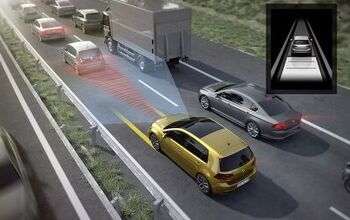
What is Automatic Emergency Braking?
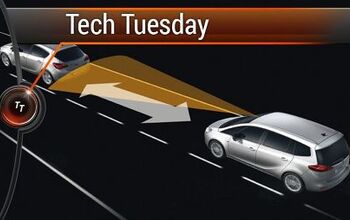
Adaptive Cruise Control Seeping Into Affordable Segments

Ford Introduces Technology to Inhibit Speeding
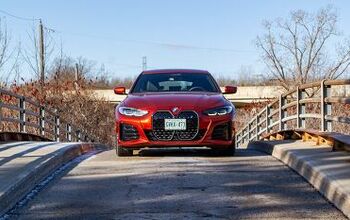
The 2024 BMW i4 xDrive40 is the Best Small BMW
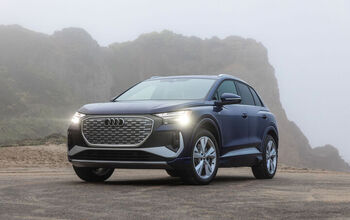
2024 Audi Q4 E-Tron Is Here With Faster Charging And More Power
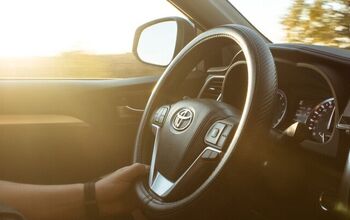
Two Main Reasons Cars are Less Dependable and More Frustrating

Aston Martin Trademark Has A Wild History: From Star Wars To Spyker
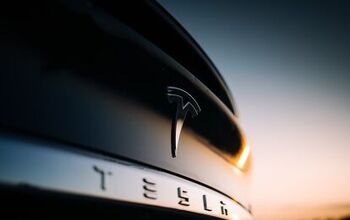
America Plugs In: CarMax Data Shows Surge in EV Consideration

Fiat Could Bring A Pickup To The US

Beyond the Price Tag: Understanding the Real Costs of a New Vehicle
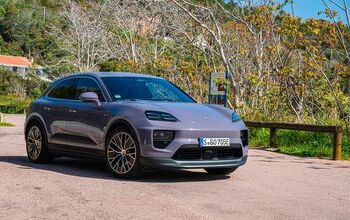
2024 Porsche Macan EV Review: First Drive
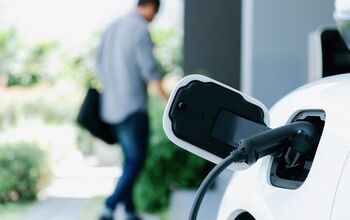
Who's Driving Electric? Inside the Satisfaction of EV Owners
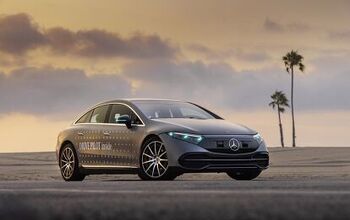
Mercedes Gets Green Light on Turquoise Lights for Automated Driving

- Schedule Calibration Appointment
- Location Announcements
- ADAS Technician Training
- Press Releases
- Own A Calibration Center
- ADAS Glossary
Adaptive Cruise Control: What is ACC in ADAS?
- June 3, 2021
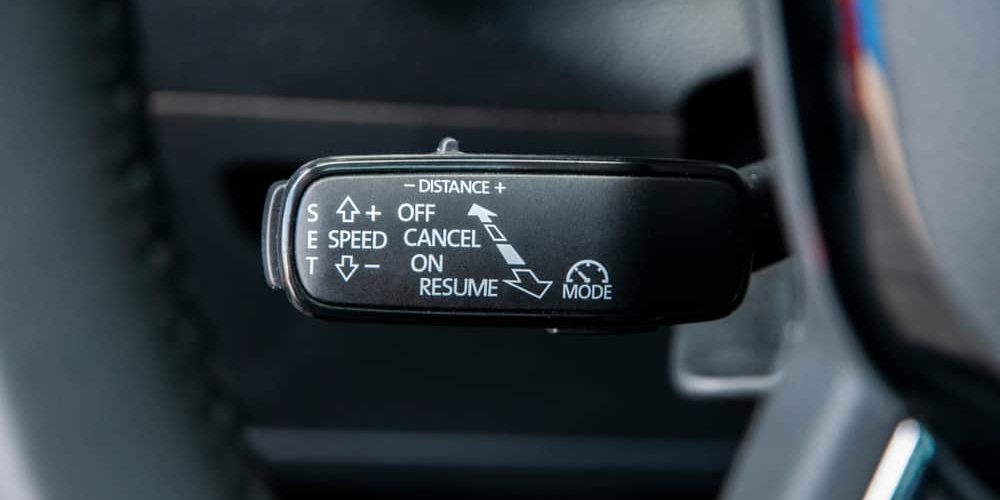
Table of Contents
What is ACC in ADAS?
When it comes to cars, ACC stands for Adaptive Cruise Control. In a Consumer Reports survey , 85 percent of drivers with Adaptive Cruise Control (ACC) on their vehicles said they were very satisfied with it. What’s more, 19 percent said their ACC system helped to avoid a crash.
Standard cruise control has been around since the 1950s . Adaptive cruise control has been in development since the 1990s . Mercedes was the first automaker to bring ACC to the U.S. market in 1999 . Twenty years later, automakers are still working to improve their cruise control offerings. In the meantime, ACC technology has become one of the building blocks of autonomous driving.
In this article, we will explain adaptive cruise control and how it works, provide examples of ACC features in ADAS packages, and explain the importance of adaptive cruise control calibration.
What is Adaptive Cruise Control?
Adaptive cruise control or Active Cruise Control (ACC) is an advanced driver assistance system (ADAS) that automatically adjusts a vehicle’s speed when there are slow-moving vehicles ahead, with the aim of maintaining a safe following distance. When the road ahead is clear, ACC automatically accelerates to your pre-set speed. Adaptive cruise control is ideal for highway speeds.
ACC is a major component and precursor of fully autonomous vehicles. According to SAE , Driving Automation Level 1 driver support features provide steering OR brake/acceleration to the driver while the jump to Level 2 requires features that provide both steering AND brake/acceleration to the driver. On its own, ACC is a Level 1, but when combined with another driver assist feature that steers, your vehicle reaches Level 2 on the Driving Automation scale – a step closer to fully autonomous driving .
As a foundation of autonomous driving, ACC has the capability of reducing driver stress and radically improving driver safety. A study from the Highway Loss Data Institute studied insurance claims data from 2013-2017 BMW vehicles to see how ADAS affected collision, damage, and injury rates. The BMW Driving Assistance package added ACC to the following ADAS: Forward Collision Warning , Lane Departure Warning , Front Automatic Emergency Braking . With the addition of ACC, this package reduced the rates of property damage by 27 percent and bodily injury claim rates by 37 percent.
How does Adaptive Cruise Control work?
Just as with traditional cruise control, the adaptive cruise control system requires drivers to choose their preferred speed. Next, ACC requires drivers to set their preferred following distance from the vehicle’s pre-set options. Many have close, medium, and far selections to toggle between.
Sensors Used in Adaptive Cruise Control
Vehicles with adaptive cruise control use ACC sensor data to tell your car’s speed, distance from other vehicles, and the speed of vehicles ahead of you. There are many types of adaptive cruise control technology. The following types of sensors have all been used for ACC:
- Laser (Lidar)
Most (but not all) current forms of this ADAS use radar as their main source of information. A radar sensor mounted in the front of the vehicle is used to analyze the road ahead. It does this by emitting radio waves and measuring how long they take to return to the ACC sensor. A few internal calculations and your vehicle can tell the car’s distance and speed. Data from the radar distance sensors and the vehicle speed sensors are used to adjust your speed and keep your car a set distance from the one ahead of you.
ACC System Versions and Commonly Bundled ADAS
Most automakers have their own version of adaptive cruise control. Not everyone uses the same names for their ACC system. Here are a few industry terms that are all different names for ACC:
- Dynamic cruise control
- Intelligent cruise control
- Radar cruise control
- Radar adaptive cruise control
- Dynamic laser cruise control
- Autonomous cruise control
- Smart cruise control
- Dynamic radar cruise control
ACC with Stop & Go, Traffic Jam
Beyond the similar naming, there are several different features that adaptive cruise control is often bundled with to provide sensor fusion. One example of this is a feature called ACC with Stop and Go or ACC with Traffic Jam Assist. This adds the ability to come to a complete stop via automatic braking and then re-accelerate to the car’s set speed as traffic moves. All the while, data from sensors is used to keep a set, safe distance from cars ahead when you encounter heavy traffic.
Because it’s not an autonomous car, those with stop and go capabilities will only “go” again within three seconds if traffic flow allows. If it’s longer than three seconds, driver action is needed to re-engage the system.
ACC + Forward Collision Warning & Automatic Braking
Forward Collision Warning and Automatic Emergency Braking (AEB) advanced driver assistance systems are often combined with ACC to provide audible alerts, instrument panel alerts, and tactile warnings of a forward collision risk, then automatic braking to prevent or mitigate damage from a collision.
ACC + Lane Centering
Adaptive Cruise Control works well with others. As previously mentioned, when adaptive cruise control is combined with an ADAS with steering capabilities like lane centering and proactive lane keeping assist systems, your car is considered a Level 2 on the SAE autonomous driving scale — meaning that the vehicle can accelerate, decelerate, and steer on its own — under very specific conditions, including initiation speed and weather. While it’s a step up in terms of driving automation, for safety, a human driver is still required to supervise constantly, including steering, braking, or accelerating.
ACC + GPS or Traffic Sign Recognition
Some ACC systems offer advanced traffic sign recognition , while others utilize GPS speed limit data. These optional ACC features help to combat the use of ACC technology to speed.
4 Examples of Adaptive Cruise Control
There are many different flavors of ACC. Names, tech, and bundled features make the automotive landscape — dotted with endless features, diverse names, and function variations — a bit tricky to navigate. To help you recognize ACC features, here are four automaker examples.
Ford Adaptive Cruise Control
Ford is one example of an automaker with adaptive cruise control. Here’s how Ford’s describes its system and capabilities:
“Available on select Ford vehicles is a series of Adaptive Cruise Control (ACC) features employing advanced radar and camera technology. ACC lets you set a cruising speed and distance from the vehicle ahead of you. When it slows down, you automatically do too; when traffic picks back up, you resume your preset speed and distance. Then comes ACC with Stop-and-Go, which enables you to come to a complete stop when the vehicle ahead stops. Now add Lane Centering, which scans the lane markings to help you stay in your lane if the system detects you’re drifting out of it. And that’s not all. Now there’s Intelligent Adaptive Cruise Control, which includes all of these features plus new Speed Sign Recognition that can automatically adjust the set speed of your vehicle to the posted speed limit.”
Honda Adaptive Cruise Control (ACC) with Low-Speed Follow
In the Honda Sensing ADAS package, the automaker offers ACC on many 2021 models with what it calls Low Speed Follow. Here’s how Honda describes it :
“Cruising on the open highway has never been easier! Honda’s Adaptive Cruise Control (ACC) with Low-Speed Follow lets you set your cruise speed and interval behind a vehicle detected ahead, and then maintains that interval by braking your vehicle or applying the throttle. And the Low-Speed Follow function can bring your vehicle to a complete stop when a vehicle detected ahead slows to a stop, and it lets you resume operation by pressing a button or the accelerator.”
Hyundai Smart Cruise control (SCC) with Stop & Go
Hyundai offers adaptive cruise control, including on the Santa Fe. Here’s how the automaker describes it :
“While traveling at a speed set by you, it uses radar to maintain a safe distance from the car ahead. When the system slows the vehicle to a stop, it will reactivate if the vehicle in front moves within 3 seconds.”
Hyundai also offers Highway Driving Assist that works together with Smart Cruise Control. Here’s how Hyundai describes this feature :
“Your “co-pilot” for highway driving, when actively engaged with Smart Cruise Control or Lane Following Assist, this smart convenience automatically helps keep you centered in your lane and traveling at a safe distance behind the car ahead. Not only that, it also can keep you driving at the right speeds, automatically setting your pace based on GPS and highway data.”
Subaru EyeSight Adaptive Cruise Control
As part of Subaru’s Eyesight Driver Assist Technology Package, ACC is standard on many of the brand’s 2021 models and optional on the rest. It uses dual forward-facing color cameras mounted near the rearview mirror. Here’s how Subaru describes its ACC system in a promotional video :
“With adaptive cruise control, eyesight can help you stay with the flow of traffic. When you set cruise control, you can select from up to four present following distances. EyeSight watches ahead and if it detects traffic is slowing, adaptive cruise control adjusts your speed accordingly to keep your selected distance. Once traffic starts moving faster, it can automatically accelerate back up to your set speed. It can even work in stop-and-go traffic.
For some, it’s less worry about adjusting cruise control. For others, it’s like having an extra set of eyes on the road.”
Adaptive Cruise Control Limitations
Drivers should know that they are responsible for what happens when they are behind the wheel. Every company makes sure to include an asterisk and notice that drivers are still needing to be actively engaged in driving. Some drivers are using ACC to speed . A study of 40 drivers by the Insurance Institute for Highway Safety (IIHS) found that they were more likely to speed when equipped with ACC.
ACC works well in clear day and night driving, and in light weather. However, if there is fog, heavy rain, or snow, it won’t work. Additionally, if dirt, snow, or ice are on the sensors, they won’t work. ACC also has trouble on winding roads.
With or without ACC, it’s important to always leave more space during poor driving conditions, including inclement weather.
Adaptive Cruise Control Calibration
ACC is one of the most common ADAS features in vehicles today. Like other ADAS systems, ACC needs to have sensors recalibrated after a collision and many vehicle services like windshield replacement . ADAS calibration keeps ACC systems working properly.
What is adaptive cruise control calibration?
Adaptive Cruise Control calibration takes place when the camera, lidar, and radar sensors that inform your vehicle’s actions are re-aligned to improve or re-establish sensor accuracy.
Getting a car calibrated takes drivers knowing about it and recognizing the warning signs.
ACC Calibration Warnings for Drivers
For drivers, the biggest sign that you need a car calibration is a recent collision. Other circumstances that necessitate Adaptive Cruise Control calibration include any time you repair or replace something nearby the location of a sensor. Another sign would be an overly sensitive ACC system, even when you have changed the settings (where possible). Here are some related warning messages that may signal it’s time to get an ADAS calibration:
- Adaptive cruise control sensor blocked
- Adaptive cruise control failure
- Adaptive cruise control temporarily unavailable
ADAS Calibration for Auto Shops
When a car comes into the shop, techs need to know when to order or perform ADAS calibrations . They also need to understand their importance. If calibrated incorrectly, ACC systems may have following distance settings that drivers aren’t used to. They can also make the systems overly sensitive, or not sensitive enough.
Every new model year brings more and more ADAS-equipped vehicles to the streets. Cars need to be calibrated after collisions, and any repairs that may affect sensor alignment. If you want to capitalize on this impending influx of needed calibrations, Car ADAS Solutions can help. We are at the forefront of the ADAS calibration services industry. We provide turnkey ADAS calibration solutions with framework, specialty software, training, and support, built-in. Contact Car ADAS Solutions today !
Additional ACC Resources:
- Cars with Adaptive Cruise Control – Car and Driver
- 10 Best Cars with Adaptive Cruise Control – TrueCar
- Adaptive Cruise Control – MyCarDoesWhat.org
Adaptive Cruise Control FAQs
What is Adaptive Cruise Control (ACC) and how does it differ from regular cruise control?
Adaptive Cruise Control is an advanced driver assistance feature that automatically adjusts your vehicle’s speed to maintain a safe distance from the vehicle in front. Unlike traditional cruise control that maintains a constant speed, ACC can speed up or slow down based on the flow of traffic.
ACC uses a combination of radar, cameras, and various other sensors to monitor the distance to the vehicle ahead and its relative speed. This data is processed by the car’s computer systems to adjust the throttle and apply brakes if necessary, ensuring a safe following distance.
Can Adaptive Cruise Control bring my car to a complete stop?
Yes, many modern Adaptive Cruise Control systems come with stop-and-go technology that can bring your vehicle to a complete stop and then resume driving when traffic starts moving again.
Is Adaptive Cruise Control safe to use in all driving conditions?
While ACC is designed to increase safety and convenience, it is most effective in steady traffic conditions on highways or well-marked roads. It is not recommended for use in city driving, in adverse weather conditions, or on roads with poor lane markings as these factors can reduce the system’s effectiveness.
Will Adaptive Cruise Control work with any vehicle ahead of me?
Adaptive Cruise Control is generally designed to recognize and respond to most passenger vehicles and trucks. However, it may not detect objects small vehicles like motorcycles and bikes, or pedestrians. This is why it’s best to avoid using in dense cities.
Share this post
Related Articles

What is ADAS? Advanced Driver Assistance Systems (ADAS) Guide

Understanding ADAS: Automatic Emergency Braking (AEB)

Rear AEB: The ADAS That’s Putting the Brakes on Backing Crashes

New Automotive Night Vision ADAS Technology Illuminates Driving at Night

Basic Guide: ADAS Calibration Equipment

Implementing ADAS Calibration: 6 ADAS Challenges Most Shops Face (and What to Do About Them)
Subscribe To Blog Updates
Get notified when a new blog post is released!
Own Your Own ADAS Calibration Center
Enjoy high profits in an industry that is growing exponentially!
- Privacy Policy
Salt Lake City Calibration
- SLC Calibration Center
- ADAS Calibration Services
- Schedule Calibration
Calibration Centers
- Calibration Center Locations
- (801) 810-1150
- (855) 500-1533 Toll Free
- [email protected]
© 2020 Car ADAS | All rights reserved | Utah SEO & Utah Website Design by Ranksey

- February 2024
- January 2024
- December 2023
- November 2023
- October 2023
- September 2023
- August 2023
- Advisories & Tips
- Apps & Software
- Buyer's Guide
- Maintenance

Cruise Control: How it Works, Types and Everything You Should Know
Learn how to effectively use cruise control in your vehicle. follow our simple instructions to optimize your driving experience.
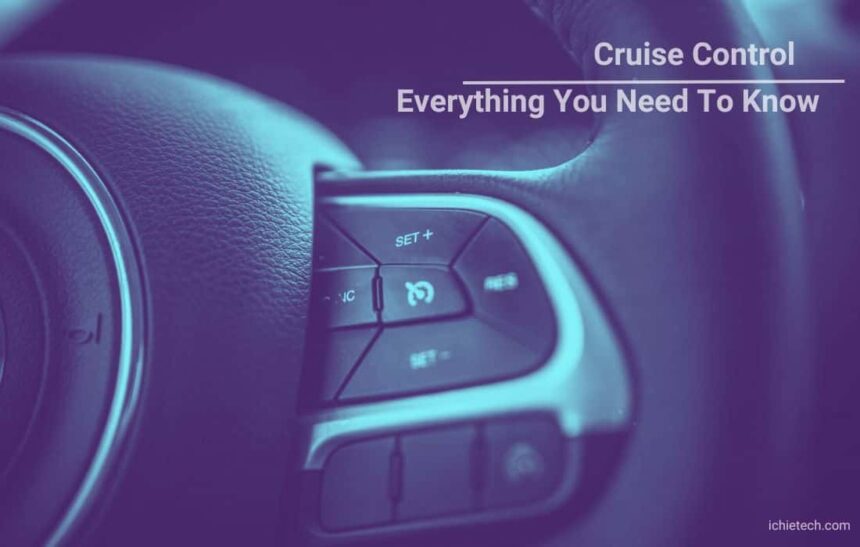
Cruise control is a popular feature in modern vehicles that can make driving more comfortable and less stressful. There are several types of cruise control systems that drivers can choose from, depending on their driving conditions and preferences. Standard cruise control is the most basic system, which allows the driver to set a constant speed that the vehicle will maintain. Adaptive cruise control, on the other hand, uses sensors to detect the distance and speed of vehicles in front of the car, adjusting the vehicle’s speed accordingly to maintain a safe following distance.
Intelligent cruise control goes even further, using artificial intelligence to learn the driver’s behaviour and adjust the speed of the vehicle before the driver takes action. Stop-and-go cruise control is ideal for use in heavy traffic and can bring the vehicle to a complete stop if necessary, while speed limiters are designed to limit the maximum speed of the vehicle. Each type of cruise control system has its own advantages and disadvantages, and drivers should choose the one that best suits their needs.
What Is Cruise Control
Cruise control is a system within a vehicle that enables drivers to establish and sustain a specific speed without having to continuously press the accelerator pedal. The system uses electronic sensors to track the vehicle’s speed and automatically regulate the throttle and brakes to maintain the predetermined speed. Cruise controle is generally employed during extended trips on highways, where sustaining a constant speed can decrease driver tiredness and boost fuel economy. It is a common feature in modern automobiles, trucks, and other types of vehicles.
How it Works
Cruise control works by using a combination of electronic sensors, servos, and control algorithms to maintain a vehicle’s speed without requiring the driver to continuously press the accelerator pedal. Here is a step-by-step breakdown of how cruise controle works:
- The driver activates cruise control by pressing a button or flipping a switch on the dashboard or steering wheel.
- The system uses electronic sensors to measure the vehicle’s speed and other factors such as throttle position, engine load, and road grade.
- The driver sets the desired speed by pressing a button or using a lever. The speed is usually displayed on the dashboard.
- Once the speed is set, the cruise controle system takes over and maintains the speed by sending signals to the throttle and brakes as necessary.
- If the vehicle encounters an incline or decline, the cruise control system adjusts the throttle to maintain a constant speed.
- If the driver needs to slow down or stop, they can deactivate the cruise control by pressing the brake or clutch pedal, or by turning off the system using the control button.
In some modern cars, the cruise control system is enhanced with additional sensors and algorithms that enable it to adapt to the surrounding traffic and road conditions. These advanced systems are known as adaptive cruise control, intelligent cruise control, or active cruise control.
How To Use Cruise Control
Cruise control is a feature commonly found in modern vehicles that allows the driver to maintain a constant speed without having to keep their foot on the accelerator pedal. Here’s how to use cruise control:
- Locate the cruise control button : The button is typically located on the steering wheel or dashboard. Check your owner’s manual if you’re having trouble finding it.
- Activate cruise control : Once you’ve found the cruise control button, press it to turn on the system. You should see a light on the dashboard indicating that cruise control is active.
- Accelerate to your desired speed : Using the accelerator pedal, accelerate to the speed you want to maintain.
- Set the speed : Press the “set” or “res” button on the steering wheel to set the speed. The vehicle will maintain this speed until you cancel cruise control or apply the brakes.
- Adjust the speed : To increase or decrease your speed, use the “+” or “-” buttons on the steering wheel.
- Cancel cruise control : To turn off cruise control, press the “off” or “cancel” button on the steering wheel, or press the brake pedal.
- Resume cruise control : If you cancel cruise control but want to resume it at the previous speed, press the “resume” button on the steering wheel.
Note: Always remember to pay attention to the road and adjust your speed as needed. Do not rely solely on cruise control while driving.

Advantages Of Cruise Control
- Reduces driver fatigue : With cruise control engaged, the driver does not have to maintain constant pressure on the accelerator pedal. This can help reduce driver fatigue, particularly during long trips.
- Conserves fuel : Cruise control helps maintain a consistent speed, which can result in better fuel efficiency. This is because the vehicle is not accelerating and decelerating as frequently, which can waste fuel.
- Helps avoid speeding tickets : Cruise control can help drivers avoid speeding tickets, as they can set the desired speed and avoid accidentally exceeding the speed limit.
- Improves safety : Maintaining a consistent speed with cruise control can help reduce the likelihood of sudden braking or acceleration, which can improve safety on the road.
- Enhances driving experience : Cruise control can make driving more comfortable and less stressful, particularly in heavy traffic or on long trips.
Disadvantages Of Cruise Control
- Limited use : Cruise controle is best suited for use on highways or other roads with minimal traffic and few curves. It may not be appropriate for use in heavy traffic or on winding roads, as it may not respond quickly enough to changing driving conditions.
- Increases risk in hazardous conditions : Using cruise controle in hazardous conditions such as rain, ice, or snow can be dangerous. The driver may not be able to react quickly enough to changing conditions, and the vehicle may lose traction or spin out of control.
- Can lead to complacency : Relying too heavily on cruise controle can lead to complacency and inattention while driving. The driver may become less aware of their surroundings or less attentive to the road.
- May cause speed variations : Cruise controle may cause speed variations due to changes in road elevation, wind, or traffic conditions. This can be a problem if the driver is not paying attention and fails to adjust the speed manually.
- May reduce driver engagement : Using cruise controle for extended periods of time may reduce driver engagement and enjoyment of the driving experience.
Types Of Cruise Control
Modern vehicles offer various types of cruise control systems to assist drivers in maintaining a steady speed. Here are some of the most common types of speed control.
1. Standard Cruise Control
Standard cruise control is the most basic form of speed control system that has been around for several decades. It allows the driver to set a desired speed and maintain it without having to keep their foot on the accelerator pedal. Once activated, the system uses electronic sensors to monitor the speed of the vehicle and automatically adjusts the throttle to maintain a constant speed.
With standard cruise controle, the vehicle will maintain the set speed regardless of changes in the road conditions, such as uphill or downhill slopes or curves. To deactivate the system, the driver can either apply the brakes or turn off the cruise control switch. Standard cruise controle can be found on many vehicles, from entry-level models to high-end luxury cars.
While it can help reduce driver fatigue and improve fuel economy on long drives, it requires the driver to remain attentive and adjust the speed manually if necessary. Therefore, it is important for drivers to use it responsibly and not rely solely on the system to maintain a safe driving experience.
Advantages of Standard Cruise Control
- Reduced driver fatigue : By allowing the driver to set a constant speed and not having to keep their foot on the accelerator pedal, standard cruise control can help reduce driver fatigue and make long drives more comfortable.
- Improved fuel efficiency : Maintaining a constant speed using cruise controle can improve fuel efficiency by reducing unnecessary acceleration and deceleration, resulting in lower fuel consumption.
- Avoiding speeding tickets : Standard cruise control helps drivers avoid unintentionally exceeding the speed limit, which can result in costly speeding tickets.
- Easier driving in heavy traffic : When driving in heavy traffic, using cruise controle can help reduce stress and allow drivers to focus on other aspects of driving, such as changing lanes and looking out for other drivers.
- Consistent speed : By maintaining a consistent speed, standard cruise controle can provide a smoother driving experience, especially on long, open roads where it can be challenging to maintain a constant speed manually.
Disadvantages Of Standard Cruise Control
- Limited functionality : Standard cruise control can only maintain a constant speed and does not adjust the speed based on traffic or road conditions. As a result, drivers must be attentive and make manual adjustments if necessary, especially in situations such as steep hills, winding roads, or heavy traffic.
- Reduced control : By taking over the throttle, standard cruise controle can reduce the driver’s control over the vehicle, particularly in emergency situations that require quick acceleration or deceleration.
- Safety risks : Standard cruise controle may pose a safety risk in some situations, such as when driving on wet or icy roads, where sudden changes in road conditions could cause the vehicle to skid or lose control.
- Increased fuel consumption : In some cases, standard cruise controle can actually increase fuel consumption, particularly in stop-and-go traffic, where frequent acceleration and deceleration can lead to higher fuel consumption than maintaining a constant speed.
- Maintenance and repair costs : If the cruise controle system malfunctions, it can be costly to repair or replace.
2. Adaptive Cruise Control
Adaptive Cruise Control (ACC) is an advanced form of speed control that uses sensors and radar to detect the distance between the driver’s car and the vehicle ahead, unlike other types of cruise control systems. This type of cruise control automatically adjusts the speed of the vehicle to maintain a safe following distance and can even bring the vehicle to a complete stop if necessary.
The system uses sensors and radar to detect the distance between the driver’s car and the vehicle ahead. If the vehicle ahead slows down or stops, the ACC system automatically applies the brakes to slow down or stop the car, maintaining a safe distance. When the road clears or the vehicle ahead moves faster, the ACC system accelerates the car to the driver’s set speed or the maximum speed limit.
Some ACC systems also come with collision warning systems that alert the driver if the car gets too close to the vehicle ahead. Some systems can also detect pedestrians, animals, or other obstacles and apply the brakes if necessary.
Advantages Of Adaptive Cruise Control
- Enhanced safety : By automatically maintaining a safe distance from the vehicle ahead, adaptive cruise control can help reduce the risk of rear-end collisions, making it a valuable safety feature.
- Reduced driver fatigue : Adaptive speed control can reduce driver fatigue by taking over the task of maintaining a safe following distance, especially in heavy traffic.
- Increased convenience : ACC can make long drives more comfortable and less stressful, as the driver doesn’t have to constantly adjust the speed.
- Fuel efficiency : By maintaining a constant speed and reducing unnecessary acceleration and deceleration, adaptive cruise control can help improve fuel efficiency.
Disadvantages Of Adaptive Cruise Control
- High cost : ACC systems are more expensive than traditional cruise control systems.
- Limited functionality : ACC may not work in all driving situations, such as on winding roads or in heavy rain or snow.
- Over-reliance : Drivers may become too reliant on the ACC system and neglect to pay attention to the road and other vehicles, which can lead to accidents.
- Complex operation : ACC systems can be complex and difficult to operate, requiring drivers to understand how the system works and how to use it correctly.
3. Intelligent Cruise Control
Intelligent Cruise Control (ICC), also known as Active Cruise Control (ACC), is an advanced form of cruise controle that uses sensors and cameras to detect the distance and speed of the vehicles ahead. ICC not only maintains a safe distance from the vehicle ahead but also adjusts the speed of the vehicle to match the flow of traffic.
The system uses a forward-facing camera and sensors to detect the speed and distance of the vehicle in front of the driver. If the vehicle ahead slows down or speeds up, ICC automatically adjusts the speed of the driver’s car to maintain a safe following distance. Unlike regular speed control, ICC can also bring the car to a complete stop and resume driving when the vehicle ahead starts moving again.
ICC systems can also recognize lane markings and keep the car centred within the lane, providing additional safety and convenience benefits. Some ICC systems can even detect and respond to pedestrians and other obstacles, providing an added layer of safety.
Advantages Of Intelligent Cruise Control
- Increased safety : By automatically adjusting the speed and maintaining a safe following distance, ICC can help prevent accidents and reduce the risk of collisions.
- Reduced driver fatigue : ICC can reduce driver fatigue and make long drives more comfortable, especially in heavy traffic.
- Improved fuel efficiency : By maintaining a constant speed and reducing unnecessary acceleration and deceleration, ICC can help improve fuel efficiency.
- Enhanced convenience : ICC can make driving more convenient and less stressful, as the system takes care of maintaining a safe distance and speed.
Disadvantages Of Intelligent Cruise Control
- High cost : ICC systems can be expensive, especially in luxury cars.
- Complex operation : ICC systems can be complex and difficult to operate, requiring drivers to understand how the system works and how to use it correctly.
- Limited functionality : ICC may not work in all driving situations, such as on winding roads or in heavy rain or snow.
- Over-reliance : Drivers may become too reliant on the ICC system and neglect to pay attention to the road and other vehicles, which can lead to accidents.
4. Stop-and-Go Cruise Control
Stop-and-Go Cruise Control is an advanced form of speed control, Unlike other types of cruise controle systems. It can maintain a safe distance from the vehicle ahead, even in stop-and-go traffic. This type of cruise controle is designed to help drivers reduce stress and fatigue when driving in heavy traffic conditions. The system uses sensors and cameras to detect the distance and speed of the vehicle ahead.
When traffic slows down or comes to a stop, the Stop-and-Go Cruise Control system automatically applies the brakes to bring the car to a complete stop. When the traffic ahead starts moving again, the system automatically accelerates the car to follow the flow of traffic.
Stop-and-Go speed control systems can help reduce the stress and fatigue of driving in heavy traffic, as the system takes care of maintaining a safe distance and speed. Some systems also have the ability to recognize and respond to pedestrians and other obstacles, providing an added layer of safety.
Advantages Of Stop-and-Go Cruise Control
- Reduced driver fatigue : Stop-and-Go Cruise controle can reduce driver fatigue and make long drives in heavy traffic more comfortable.
- Increased safety : By automatically adjusting the speed and maintaining a safe following distance, Stop-and-Go Cruise controle can help prevent accidents and reduce the risk of collisions.
- Enhanced convenience : Stop-and-Go speed control can make driving in heavy traffic more convenient and less stressful, as the system takes care of maintaining a safe distance and speed.
- Improved fuel efficiency : By maintaining a constant speed and reducing unnecessary acceleration and deceleration, Stop-and-Go Cruise controle can help improve fuel efficiency.
Disadvantages Of Stop-and-Go Cruise Control
- Limited functionality : Stop-and-Go speed control may not work in all driving situations, such as on winding roads or in heavy rain or snow.
- High cost : Stop-and-Go speed control systems can be expensive, especially in luxury cars.
- Complex operation : Stop-and-Go speed control systems can be complex and difficult to operate, requiring drivers to understand how the system works and how to use it correctly.
- Over-reliance : Drivers may become too reliant on the system and neglect to pay attention to the road and other vehicles, which can lead to accidents.
5. Speed Limiter
A speed limiter is a type of speed control system that is designed to limit the maximum speed of a vehicle. Unlike other types of cruise control systems, which maintain a set speed, a speed limiter prevents a vehicle from exceeding a certain speed limit.
Speed limiters can be installed in vehicles as a safety feature, particularly in commercial vehicles like trucks and buses. These vehicles are often required by law to have speed limiters installed, as they can help prevent accidents caused by excessive speed. In addition, speed limiters can help improve fuel efficiency and reduce wear and tear on the vehicle’s engine and brakes.
There are two main types of speed limiters :
Hard limiters : These limiters prevent a vehicle from exceeding a certain speed limit, typically set by the manufacturer. Once the limit is set, it cannot be exceeded, even in emergency situations. Soft limiters : These limiters allow the vehicle to exceed the set speed limit in certain situations, such as when overtaking or accelerating to merge onto a highway. However, the limiter will still prevent the vehicle from exceeding the maximum speed limit.
Advantages Of Speed Limiter
- Increased safety : Speed limiters can help prevent accidents caused by excessive speed, especially in commercial vehicles.
- Reduced fuel consumption : By limiting the maximum speed of a vehicle, speed limiters can help improve fuel efficiency.
- Reduced wear and tear : Speed limiters can help reduce wear and tear on a vehicle’s engine and brakes, extending the life of the vehicle.
- Compliance with regulations : In some countries, commercial vehicles are required by law to have speed limiters installed.
Disadvantages Of Speed Limiter
- Limited functionality : Speed limiters may not be effective in preventing all types of accidents or speeding violations.
- Reduced driver control : Some drivers may feel uncomfortable with a speed limiter installed, as it restricts their ability to control the vehicle’s speed.
- Maintenance costs : Speed limiters may require maintenance and calibration, which can be costly.
It’s important to remember that cruise control is not a substitute for attentive driving. Drivers should always remain aware of their surroundings and be ready to take control of the vehicle at any time. Additionally, drivers should not use speed control in certain situations, such as in heavy traffic, on wet or slippery roads, or when driving in mountainous terrain. Overall, it can be a helpful tool for long-distance driving on open roads, but drivers should always use it with caution and be aware of its limitations.
You Might Also Like
2023 toyota camry: features, specs and price in nigeria, 10 cheap cars with hidden fuel efficiency you should know, 2022 toyota camry: features, specs and price in nigeria, top 10 best cars for women to buy in nigeria (2024), 10 most affordable family cars in nigeria, sign up for daily newsletter, be keep up get the latest tech and auto news delivered straight to your inbox..
Email address:
Leave a Reply Cancel reply
Your email address will not be published. Required fields are marked *
Save my name, email, and website in this browser for the next time I comment.
Stay Connected
Latest news.

Xiaomi Redmi A3 Review: Specs and Price in Nigeria

How to Check Car Registration Status in Nigeria

Binance in Trouble: Nigeria Demands Massive $10B Fine

Infinix Hot 40 Pro Review: Specs and Price in Nigeria
Recent comments.
Sign in to your account
Username or Email Address
Remember Me
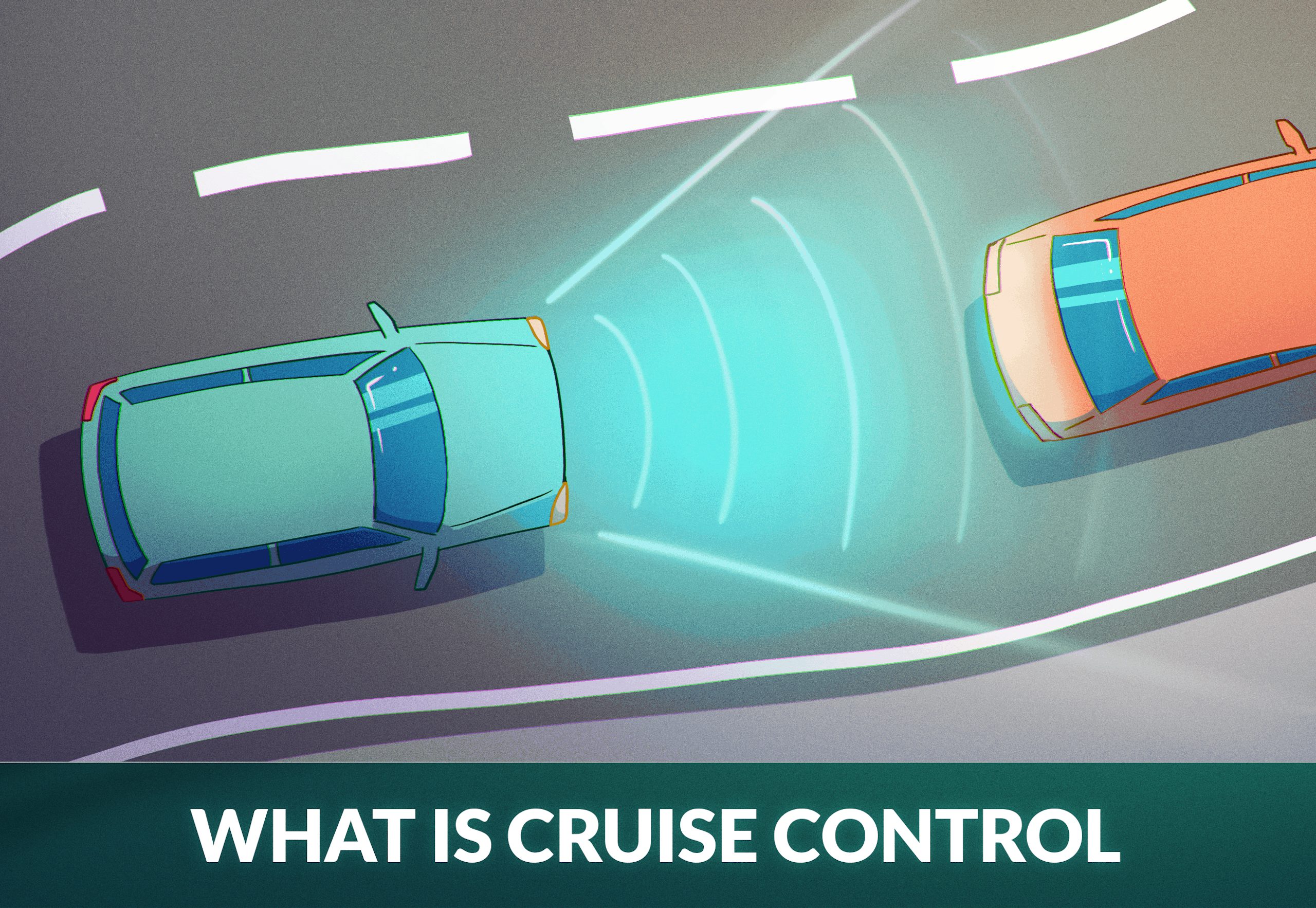
Cruise Control Explained – All You Need to Know
Cruise control has come a long way since first invented and patented by Ralph Teetor in 1950, who originally named it the “Speedostat”. Chrysler Corporation was the first manufacturer to offer the groundbreaking mechanism as an option on several of its luxury vehicle models nine years later. Today, cruise control is rapidly becoming the standard on all new vehicles, providing drivers with increased convenience on their daily drive.
As you’re learning how to operate a vehicle , understanding cruise control will help increase your comfort behind the wheel and knowledge of driving.
What is Cruise Control?
Cruise control is an electronic device within your vehicle that controls the speed of your vehicle. It allows the driver to maintain a constant speed of 25 mph without holding their foot on the accelerator. Although the feature has been around for 70 years, automotive manufacturers continue to improve upon the technology to provide drivers with increased comfort, luxury, and convenience whenever they’re behind the wheel.
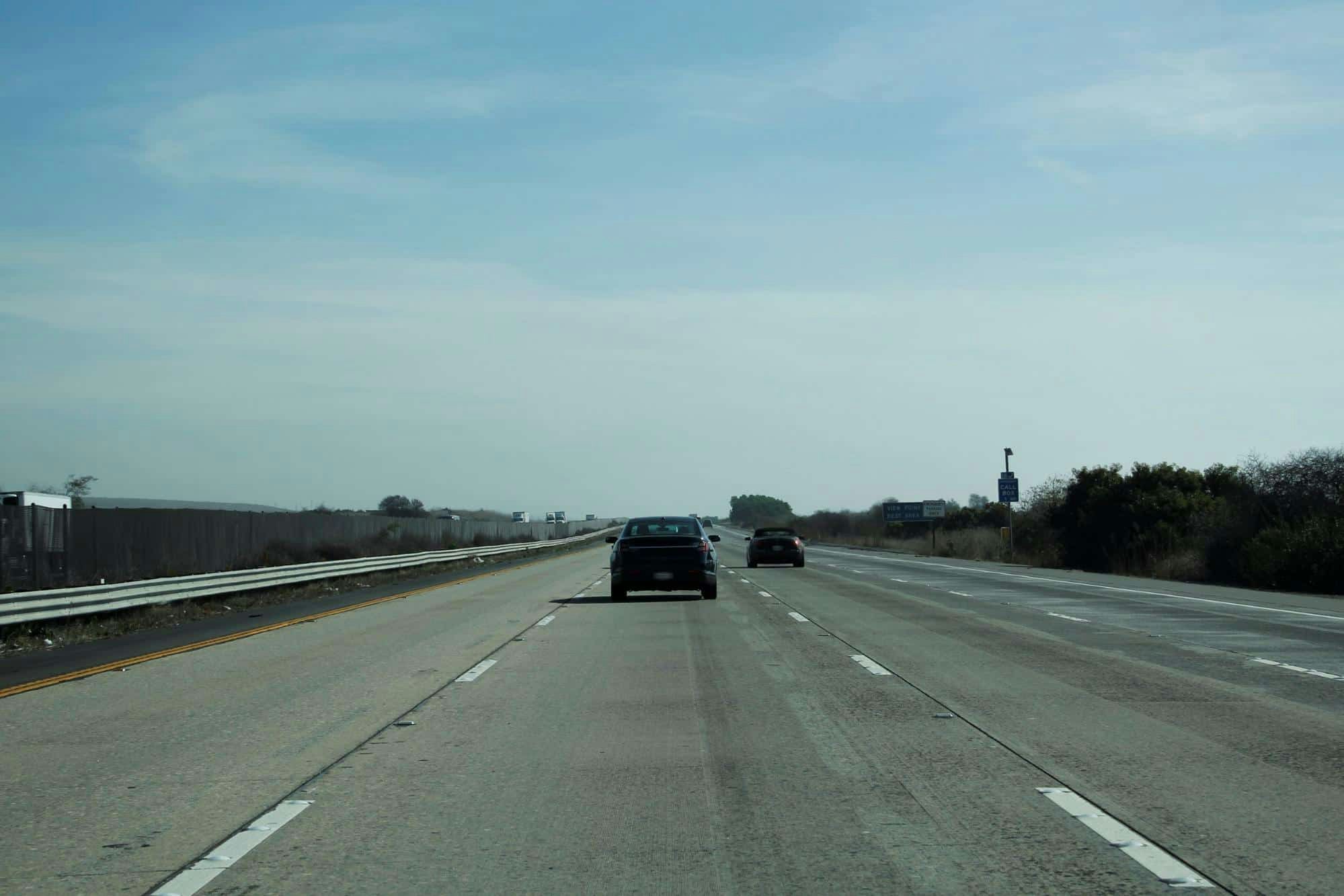
Different Types of Cruise Control
There are 3 types of cruise control systems.
- Speed Limiter
- Adaptive Cruise Control
- Semi-autonomous Cruise Control
What is a Speed Limiter?
A speed limiter will limit how fast the driver can accelerate behind the wheel. All modern vehicles contain a standard speed limiter capping speed between 120 mph and 180 mph depending to protect the vehicle’s engine and discourage reckless driving. However, an additional limiter can be added as an option in many European-made cars, as well as Tesla, Ford, and Nissan. Drivers are still required to keep their foot on the pedal to keep their vehicle in motion, but will not be able to accelerate past a predefined speed limit.
What is Adaptive Cruise Control?
Adaptive cruise c ontrol uses sensors around the vehicle’s exterior to maintain speed while keeping a safe following distance from the car ahead. The system will slow you down and speed you up as the flow of traffic fluctuates throughout your commute, removing a lot of the stress from daily driving. However, adaptive cruise control may not work well in bad weather or protect you from sudden movements, so you will want to always keep your full attention on the road.
What is Semi-autonomous Cruise Control?
Luxury automakers such as Tesla and Audi are implementing the newest rendition of cruise control on their latest vehicle models – Semi-autonomous Cruise Control. It works largely the same as adaptive cruise control, but assists drivers with lane guidance and steering. There are several variations of semi-autonomous cruise control that include additional convenience features for the driver.
How to Use Cruise Control – 6 Step Guide
These are the steps to using cruise control effectively.
- Observe weather conditions
- Build speed
- Engage cruise control
- Set cruise control
- Watch the road and steer
- Brake to disengage
1 – Observe weather conditions
As mentioned, cruise control may become inconsistent in rainy, snowy, or otherwise hazardous conditions. If you must drive in this situation, it may be a better idea to do so manually. Cruise control works best on a clear day with constant traffic flow.

2 – Build speed
Accelerate to your desired speed as you prepare to activate cruise control. US highways have posted speed limits between 55 mph and 75 mph. Do not attempt to set cruise control when you are traveling over the speed limit.
3 – Engage cruise control
Once you’ve reached your desired speed, engage the cruise control. This step will vary widely based on your vehicle make and model, however, many cruise control settings are accessible from the steering wheel controls. Check your owner’s manual for further information.
4 – Set cruise control
After turning on cruise control, you’ll need to set your desired speed. Many systems set the cruise control at the current speed, while others require you to manually set one. You can increase and decrease this speed as needed without interrupting the mechanism.
5 – Watch the road and steer
Watching the road is essential when cruise control is engaged. Cruise control is not a substitute for a human driver and will require supervision at every step. If you are using a semi-autonomous system, you will not need to steer but will need to keep at least one hand on the wheel for safety measures.
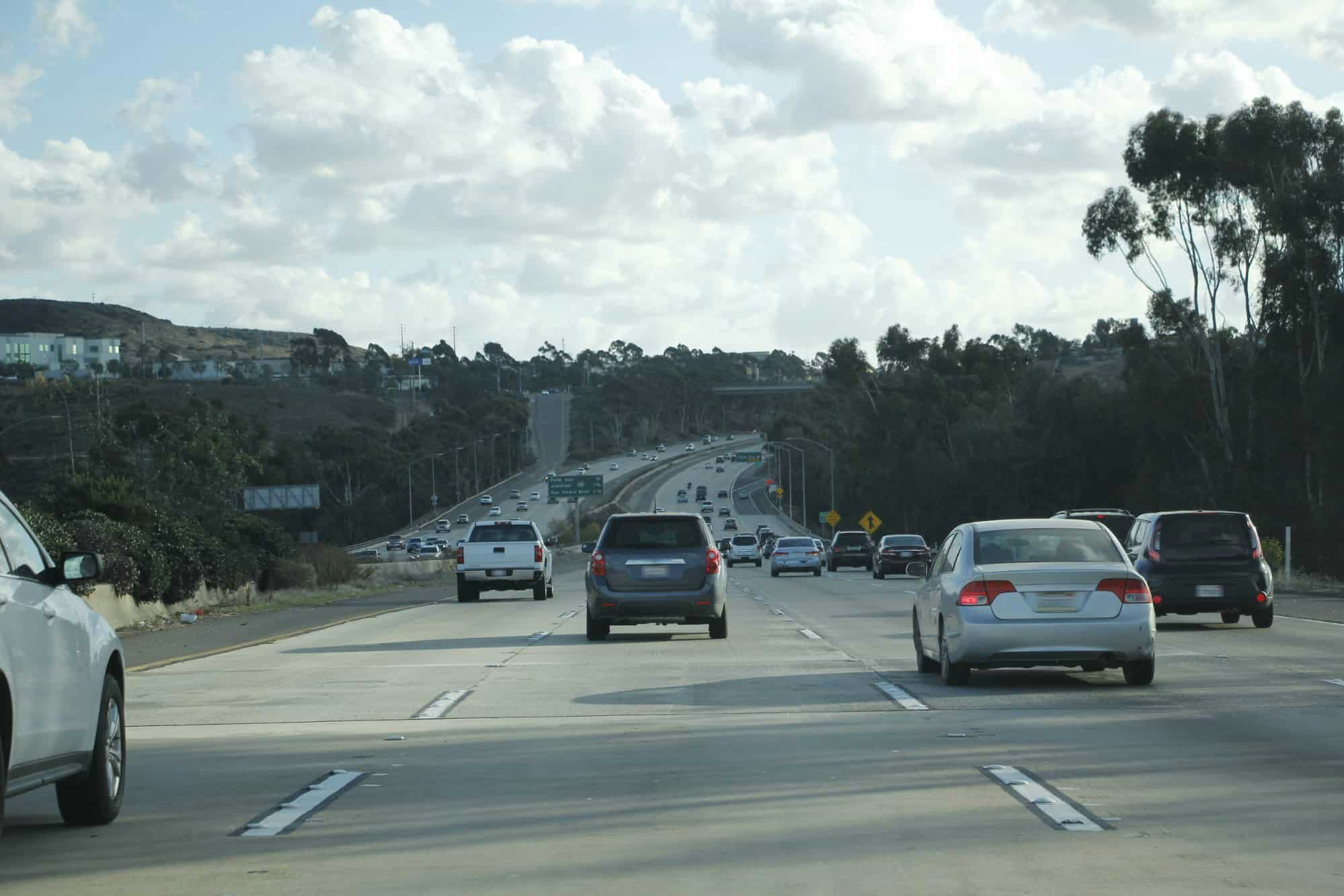
6 – Brake to disengage
When cruise control is no longer needed, or you need to quickly make a maneuver, simply apply pressure to the brakes to disengage the system. Once deactivated, you will be in full control of your vehicle once again.
When NOT to Use Cruise Control
While cruise control is a convenient feature for modern drivers, it is not perfect for all circumstances. In fact, utilizing the system can be quite dangerous if you’re not careful. Be sure not to use cruise control under these conditions.
Heavy Traffic
Heavy, or stop-and-go traffic is not ideal for safely using cruise control. When engaging cruise control on the highway, ensure your lane is clear and there are no vehicles stopping ahead.
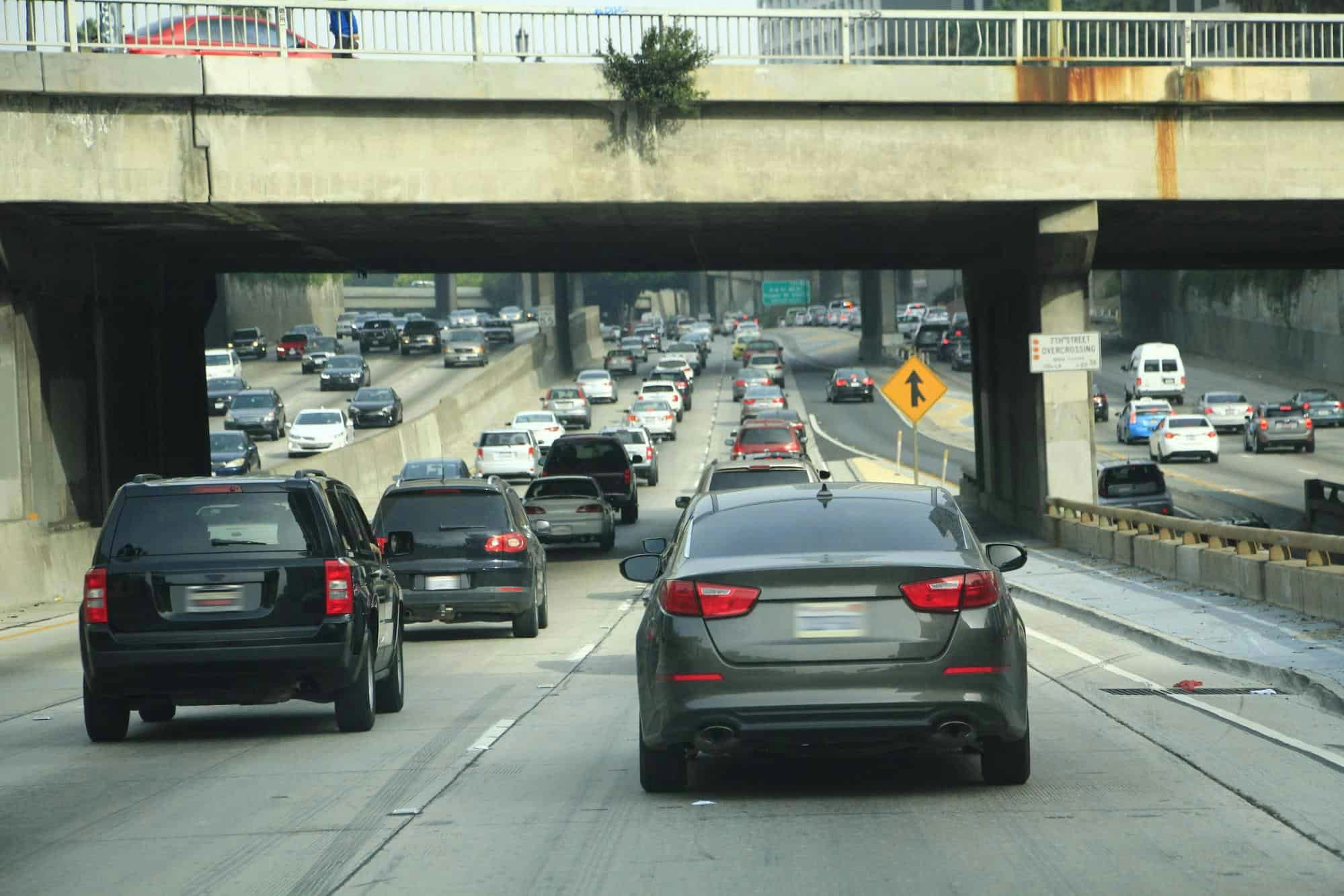
Wet or Icy Conditions
You need to be driving slowly while on wet and icy roads. While cruise control keeps a constant, predetermined speed, it takes away a lot of the manual control needed to stay safe when it’s raining or snowing.
City Driving
While driving through the city, you’ll face a number of stop lights and stop signs that will require manual braking. This action will automatically disengage cruise control.
Winding Roads
Winding roads require more attention than straight, flat streets. Cruise control systems, even adaptable cruise control, may not always detect these streets correctly, causing accidents.
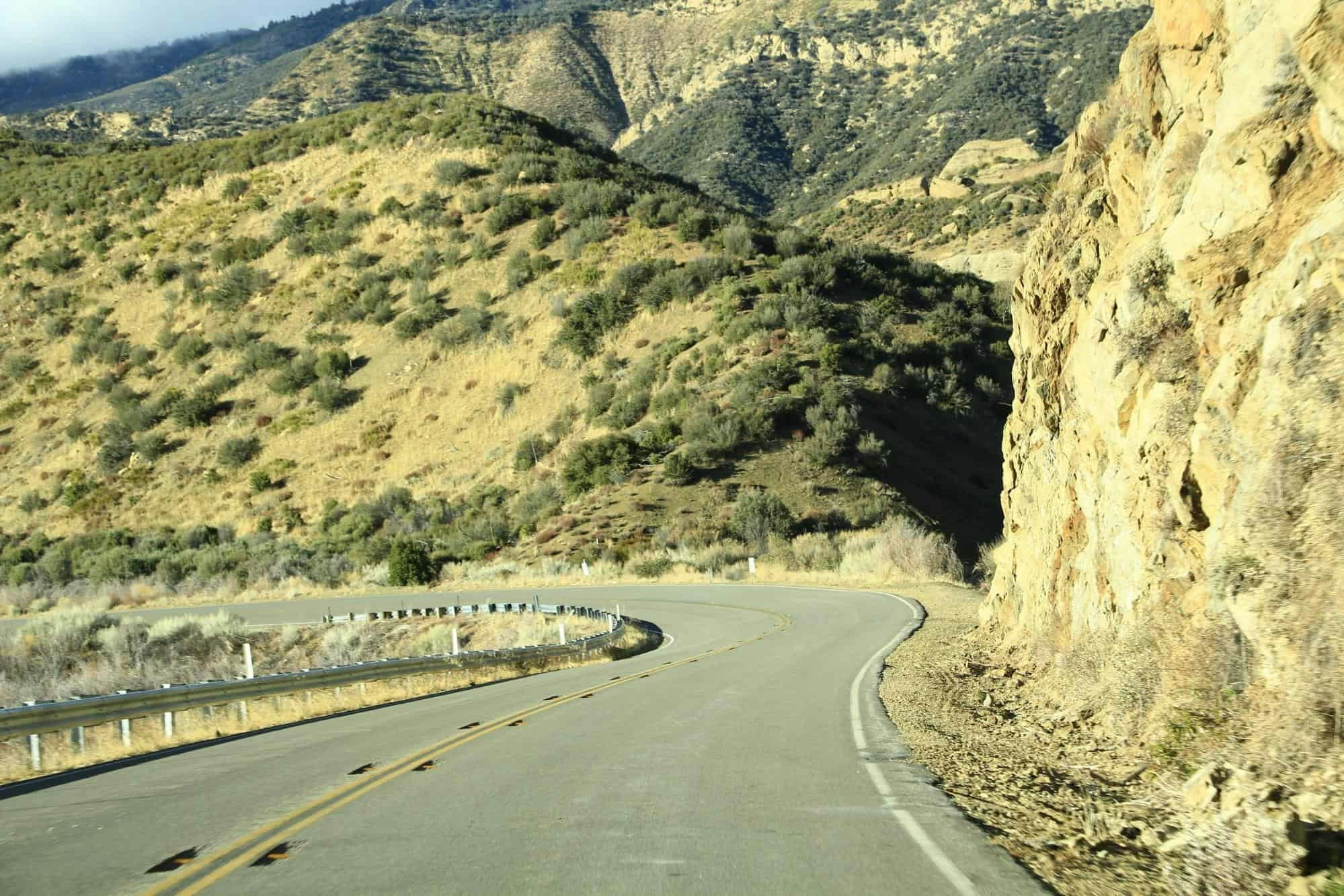
Fatigued Driving
Driving while fatigued is never a good idea, but even less so while using cruise control. Utilizing the system may add to your fatigue, as you give your vehicle more control of the journey. If you’re even the least bit tired, you should never turn on cruise control.
As you can see, cruise control is a great way to relieve much of the stress that comes with everyday driving. The constant rate of speed can also drastically improve fuel efficiency for longer drivers. Cruise control has had a positive impact on the driving industry for 70 years and shows no signs of disappearing anytime soon.

550+ exam-like questions
All you need to ace your test
Perfect for first-timers, renewals and senior citizens
Recommended articles
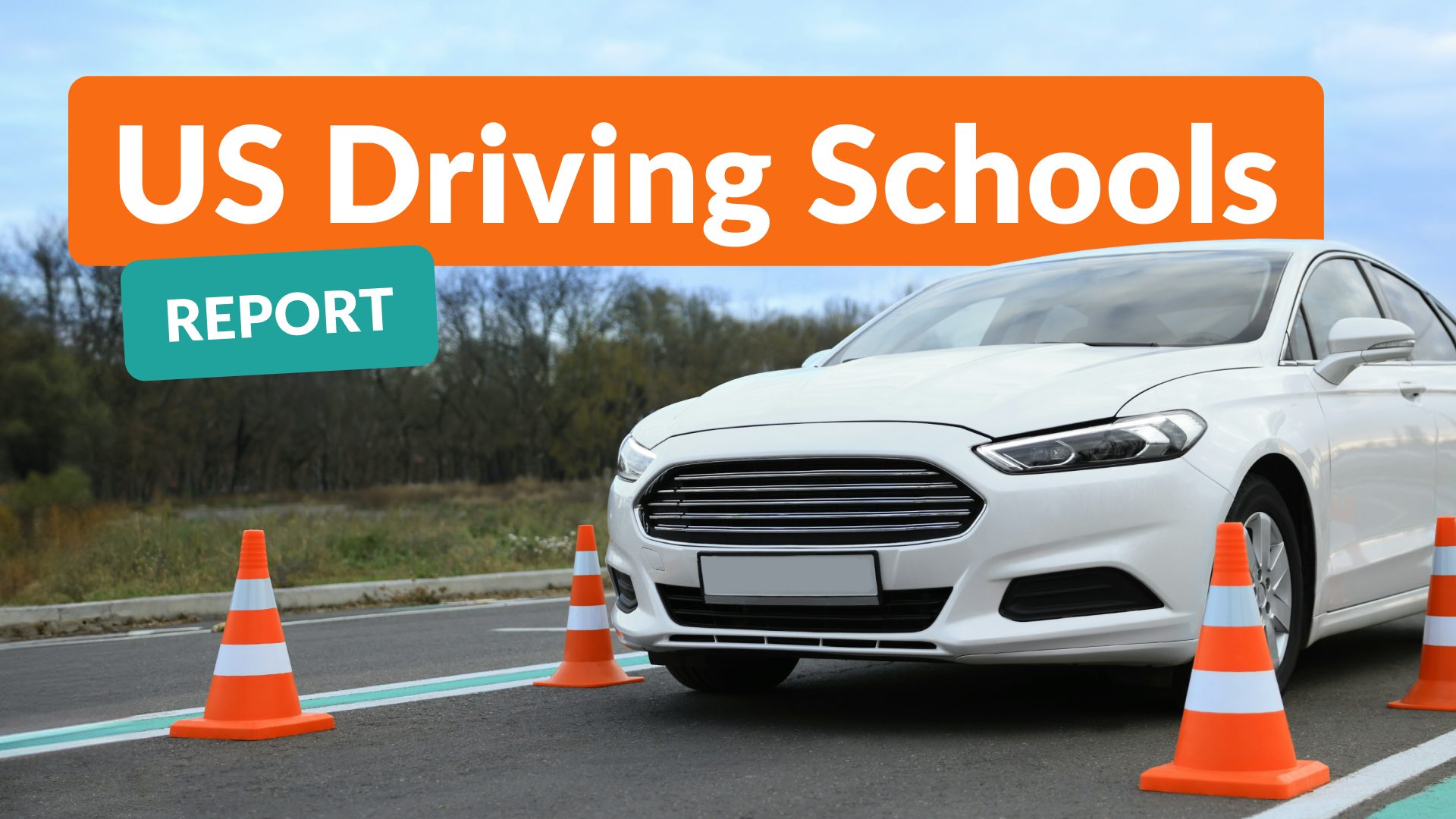
Driving School Costs Report – The Cheapest and Most Expensive States
For many, the ability to drive is not just about mobility—it’s a rite of passage that symbolizes freedom and the thrill of charting one’s own course. the anticipation of sitting behind the wheel for the first time is a universal dream, yet for many aspiring drivers in the united states, this dream comes with variable […].
Distracted Driving Report – The States With the Least and Most Distracted Driving
In april 2024, the national highway traffic safety administration (nhtsa) released data for 2022 that illustrated traffic deaths due to distracted driving increased by 12 percent from 2020 but decreased compared to 2021 to 6%. every year, thousands of drivers and passengers are fatally injured as a result of distracted driving. in 2022, roughly 2,109 […].
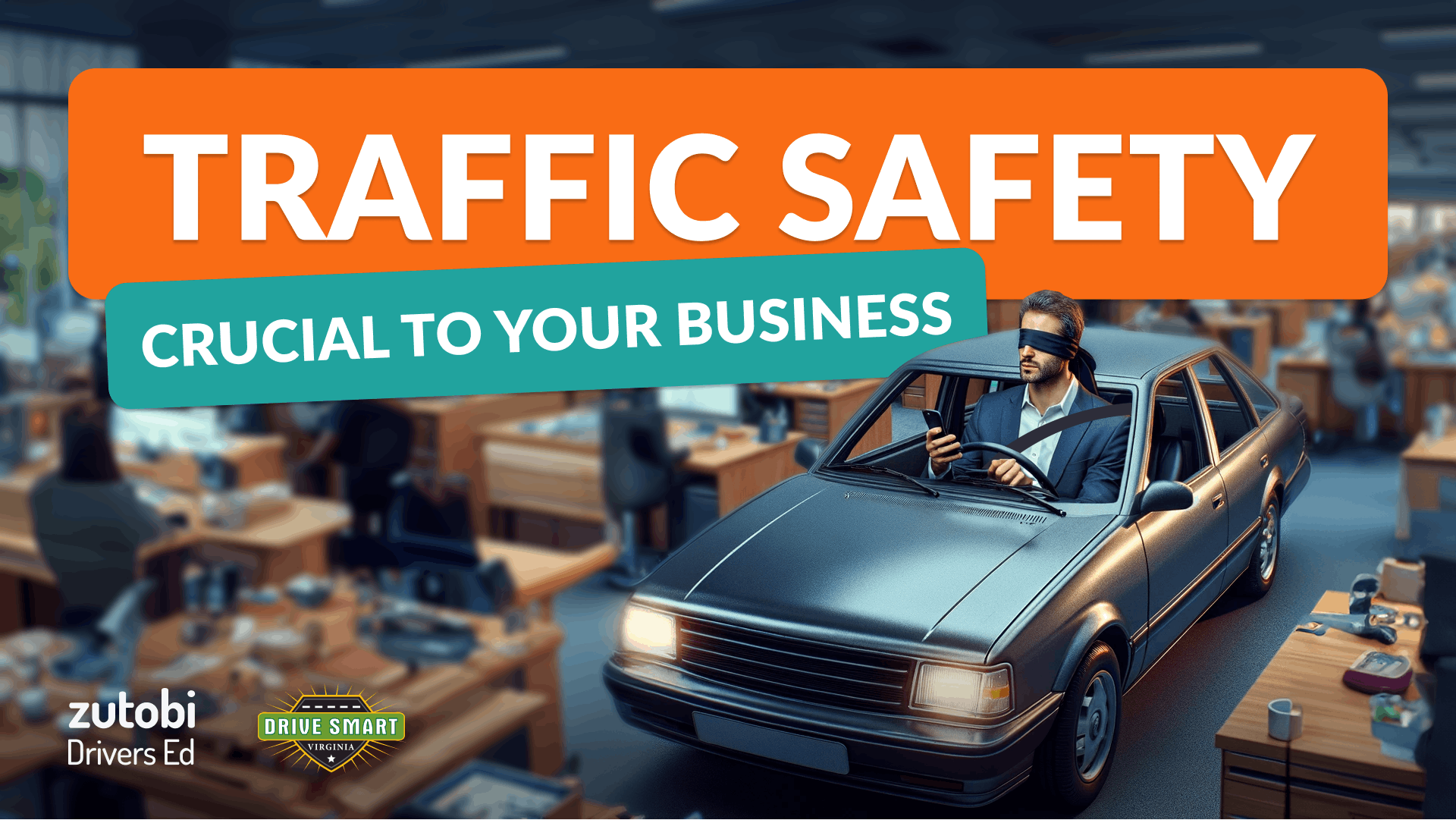
Traffic Safety is Crucial to Your Business
By kristin pettway, drive smart virginia april is distracted driving awareness month and the perfect opportunity for workplaces to review their traffic safety policies and communications. traffic crashes are the leading cause of workplace deaths in america. even if you don’t have a fleet of vehicles, safe driving should still matter to your business. after […].
Ace your DMV test, guaranteed
Get started
Best of the Zutobi blog
- Learner’s Permit Ultimate Guide
- Driving Test Ultimate Guide
- Traffic Lights Guide
- How to Pass the DMV Permit Test
- How to Pass the Driving Test
- Common Reasons For Failing the Road Test
- International Driver’s Permit Guide
- Driver’s License Renewal
- How to Get Your US Driver’s License
- How to Prepare for Your Road Test
- How to Get a Driver’s Permit
- Behind-The-Wheel training
- Terms & conditions
- Privacy policy
- Do Not Sell My Personal Information
- Subscription terms
- Terms & policies
Practice Tests
- Car Practice Tests
- CDL Practice Tests
- Motorcycle Practice Tests
Popular Searches
SUBARU STARLINK In-Vehicle Technology
Eyesight Driver Assist Technology
Parts and Accessories
Helpful Links
Customer Service
Vehicle Recalls
All Vehicles
Special Offers
Local Inventory
Our Company
Meet the Subaru Family
What is adaptive cruise control (acc).
Adaptive Cruise Control (ACC) is an intelligent driver assistance feature that works as an enhancement to traditional cruise control. Using a system of advanced sensors such as radar and cameras, ACC determines the speed and conditions of surrounding traffic and automatically adjusts cruising speed to maintain a safe distance within the flow of traffic. Many ACC systems can also recognize sudden changes in traffic conditions and alert the driver to take action to prevent a crash.
Depending on vehicle manufacturer and the system itself, any number of other terms might be used interchangeably with Adaptive Cruise Control, including:
- Active Cruise Control
- Dynamic Cruise Control
- Automatic Cruise Control
- Intelligent Cruise Control
- Smart Cruise Control
- Radar Cruise Control
How does Adaptive Cruise Control Work?
ACC uses a set of intelligent sensors including radar, lidar, lasers, GPS, and cameras. These sensors are placed around a vehicle’s exterior to monitor the road and nearby vehicles. Gathering real-time data on the distance away and speed of the vehicle in front, these sensors allow the ACC system to adjust the car’s speed as-needed. Typically, the driver sets their desired cruising speed when they engage ACC on the highway. The system then automatically accelerates and decelerates to stay at a safe distance from other cars within the flow of traffic.
Much like using traditional cruise control, activating ACC is intentionally simple so that a driver can easily use it while keeping their eyes safely on the road. Generally, the dedicated ACC button or switch is located on the steering wheel or control panel. Pressing or toggling this mechanism allows the driver to set their initial cruising speed. In some systems, drivers can also set their desired following distance.
While operating, certain ACC systems can take extra measures for safety and convenience purposes:
- Maintaining a particular distance from vehicles ahead
- Making complete stops in traffic and restarting from a complete stop when traffic resumes
- Remaining engaged at low speeds in city traffic
- Anticipating and automatically slowing around upcoming curves
- Adjusting to posted speed limits as they change
Once in operation, the ACC system remains working until the driver disengages by either pressing the brake pedal or manually deactivating the system using the dedicated switch or button. Sometimes, ACC will use visual and audio cues to alert the driver to brake if it detects a possible collision ahead. In these instances, the driver must then re-engage the system once traffic resumes.
Benefits of Adaptive Cruise Control
Some of the benefits of adaptive cruise control include creating a more relaxed driving experience, particularly during long road trips and on highways, thanks to the system’s ability to adjust automatically to traffic speed variations and road conditions. Additionally, ACC encourages safe driving practices and helps reduce crash risk by monitoring following distance and alerting the driver or intervening if a vehicle is quickly approaching. Drivers using ACC may also see improved fuel efficiency, especially on the highway, since the system helps maintain an even speed and reduces unnecessary acceleration and braking.
Advanced Adaptive Cruise Control in Subaru Vehicles
The Subaru application of ACC is known as Advanced Adaptive Cruise Control. This feature functions seamlessly as part of our EyeSight ® Driver Assist technology —a comprehensive suite of safety features designed to enhance the driving experience. Nearly all Subaru models and trims come standard with EyeSight and Advanced Adaptive Cruise Control, including some of our most popular models like the Outback , Forester , Crosstrek , and Impreza . EyeSight is an available feature on our performance sports models with automatic transmissions, including the WRX and the BRZ , as well as those with manual transmissions.
Complementing its active cruise control functionality, EyeSight includes additional advanced features including Pre-Collision Braking and Throttle Management, Automatic Emergency Steering, Lane Centering, and Lane Departure Assist designed to help keep drivers safer. In particular, Lane Departure Assist and Lane Centering monitor lane markings and can help assist drivers with steering to avoid accidental drifting into another lane. The advanced ACC sensors can also recognize another driver approaching and adjust your vehicle’s placement within the lane to create a safer distance on all sides.
Read more about our EyeSight technology.
Discover the Safety and Convenience of Subaru EyeSight Driver Assist Technology. Visit Us to Experience it in Action and Find your Perfect Subaru Today!
Advanced adaptive cruise control is a useful feature that can help make driving easier, smoother, and safer. Explore Subaru Vehicles equipped with the full suite of EyeSight features today!
Explore Subaru
Our vehicles will inspire drivers like you to become a Subaru owner for life. Find out what makes us more than a car company.
Connect with Us
About Subaru
Other Subaru Sites
© Subaru of America, Inc. Use of this site signifies your acceptance of the Terms & Conditions .
- Privacy Policies
- California Privacy
- Cookie and Ad Preferences
* MSRP does not include destination and delivery charges, tax, title, and registration fees. Destination and delivery includes handling and inland freight fees and may vary in some states. Prices, specifications, options, features, and models subject to change without notice. Select colors may be subject to an additional charge. See your retailer for more information.
** EPA-estimated fuel economy. Actual mileage may vary. For Crosstrek Hybrid and Solterra, EPA-estimated MPG equivalent on a full battery charge. Actual mileage will vary.
*** Limited warranties are contingent on age and mileage. Whatever comes first concludes the warranty.
† Connected Services depend on factors outside Toyota's control, including an operative telematics device, a cellular connection, GPS signal and the availability of a compatible wireless network, without which system functionality and availability may be limited or precluded, including access to response center and emergency support. Service may vary by vehicle and region. Apps and services subject to change at any time without notice. Requires app download/registration and subscription after trial (if applicable). Terms of Use apply. Data usage and charges may apply. To learn about Toyota’s connected services data collection, use, sharing and retention practices, please visit toyota.com/privacyvts
Safety Connect: Stolen vehicle police report required to use Stolen Vehicle Locator. Automatic Collision Notification activates only in limited circumstances.
Remote Connect: Use only if aware of circumstances surrounding vehicle and it is legal and safe to do so (e.g., do not remotely start engine if vehicle is in an enclosed space or vehicle is occupied by a child). Remote start/stop not available on manual transmission-equipped vehicles.
Drive Connect: Services not available in every city or roadway.
Service Connect: Information provided is based on the last time data was collected from the vehicle and is not real time data. Service Connect is not renewable as a stand-alone service and requires a subscription to any of Safety Connect, Remote Connect or Drive Connect upon trial expiration.
Wi-Fi Connect: Eligible vehicle and wireless service required. Wi-Fi Connect coverage and service not available everywhere. Valid in the contiguous U.S. and Alaska. Do not drive distracted. Go to att.com/solterra for terms and conditions. Up to 5 devices can be supported using in-vehicle connectivity. The Wi-Fi Connect trial begins at the time of enrollment activation and expires when 30 days or the earlier of 3GB of data is used or the 1-month period ends. Subscription required after trial. Integrated Streaming requires subscription for third-party provider services.
Subaru has the utmost respect for the environment and is a proud partner of Leave No Trace. Care was taken not to harm the environment when taking this photo.
The materials displayed on this website, including but not limited to all text, audio, video, images, photographs, illustrations, artwork, animation files and other graphics, names, logos, trademarks, and service marks, are property of Subaru or its parent or affiliated companies or its licensors and are protected by copyright, trademark, and other intellectual property laws. This site may be displayed, downloaded, and/or printed solely for your personal, non-commercial home use, provided that you do not delete or modify any copyright, trademark, or other proprietary notices. Any other use of the material on this site without the prior written consent of Subaru is strictly prohibited.
iPod and iPad are registered trademarks of Apple Inc.; Brembo is a registered trademark of Freni Brembo S.p.A.; Alcantara is a registered trademark of Alcantara S.p.A and Alcantara is produced by Toray Group.; Ultrasuede® is a registered trademark of Toray Industries, Inc.; TORSEN LSD® is a registered trademark of JTEKT TORSEN North America, Inc BBS is a registered trademark of BBS Kraftfahrzeugtechnik AG.; Bluetooth is a registered trademark of Bluetooth SIG, Inc.; HomeLink® and the HomeLink® house icon are registered trademarks of Gentex Corporation.; Tom Tom is a registered trademark of TomTom International BV; Aha and Harman Kardon are a registered trademarks of Harman International Industries, Inc.; Android is a trademark of Google Inc.; HD Radio is a registered trademark of iBiquity Digital Corporation.; SiriusXM and SiriusXM NavTraffic are registered trademarks of SiriusXM Satellite Radio, Inc.; iHeart is a registered trademark of Clear Channel.
PLEASE REVIEW THESE IMPORTANT DISCLOSURES.
Subaru of America, Inc. reserves the right to make changes at any time without notice or obligation to the information contained on this Internet site, prices, incentive programs, specifications, equipment, colors, materials, product illustrations and to change or discontinue models. All prices are based upon Manufacturer's Suggested Retail Prices ('MSRP') in U.S. dollars (unless otherwise indicated) and exclude taxes, title fees, licensing, options and destination charges unless specifically included. Retailers are independent businesses and are free to set their own retail prices. All information contained at this Internet site is intended for the USA market only.
** EPA-estimated fuel economy. Actual mileage may vary. For Crosstrek Hybrid and Solterra, EPA-estimated MPG equivalent on a full battery charge. Actual mileage will vary.

- Entertainment
- Submit Your Story
Explained: The different kinds of cruise control and how they work
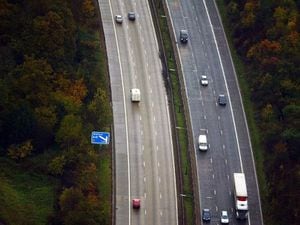
Hands-free driving may be a relatively new innovation – but foot-free driving has been around for decades. In fact, the first cruise control systems were installed over 60 years ago – and in many ways they operate identically to the systems found today.
But what exactly is cruise control? Put simply, it’s an automatic system which keeps your car at a constant speed with as little variation as possible. The inventor, Ralph Teetor, was said to have come up with the idea after a frustrating journey with his lawyer, who sped up and slowed down as he talked.
How do you use cruise control?
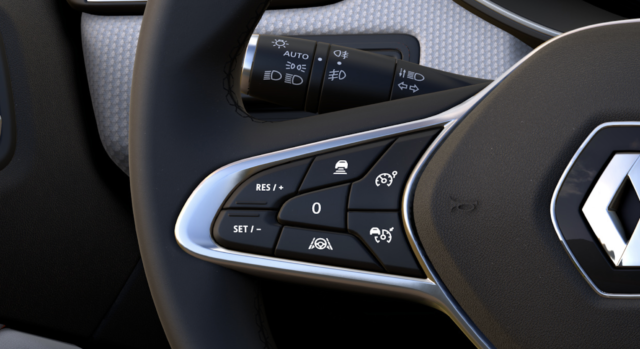
Cruise control is offered as standard equipment or at least as an optional extra on nearly every new car sold in the UK – though you may need to look a bit harder for it if buying an older vehicle. Basic systems are usually operated by a control either on the steering wheel or a steering column stalk.
Cruise control consists of an up/down (or +/-) control, as well as a ‘Set’ button, a ‘Recall’ button and sometimes an on/off button. The driver brings the car up to their desired speed, and if the system is switched on, pressing ‘Set’ will store that speed in the car’s memory.
The vehicle will then take control of the accelerator, keeping the car at the desired speed for as long the driver wants. Fine-tuning of the speed can be achieved with the +/- controls, and the target speed is often shown on a dashboard display.
The system is switched off in two ways – either with external input, such as the driver pressing the throttle or brake, or by using the on/off switch. At this point, the desired speed is still usually stored in the car’s memory, and that’s what the ‘Recall’ button is for – allowing the driver to return to their previous speed after passing an obstruction, junction or traffic.
What are the other kinds?
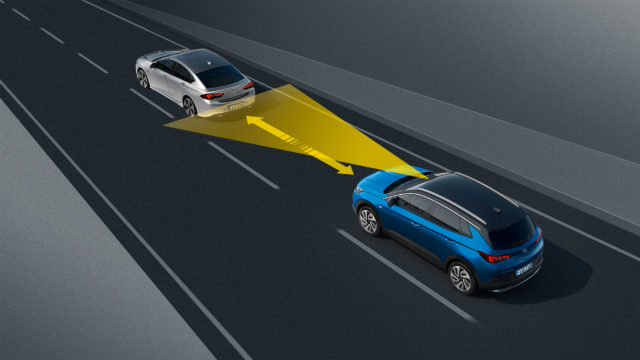
There’s not really much you can innovate on cruise control, but car manufacturers have managed to do it – and come out with adaptive cruise control and advanced adaptive cruise control.
Adaptive cruise control adds a scanner to the front of the car, usually a camera, radar, or laser array – or some combination of the three. This continuously scans the road ahead for traffic and is able to detect when there’s a car in front.
The system then alters your car’s speed so that instead of closing the gap to a slower-moving car, it will follow it at a set distance – controllable by the driver. The car will continue to match the speed of the car in front until it changes lane, exits the road or the driver overtakes.
Advanced adaptive cruise control adds an extra layer to this, as it’s capable of altering the cruise control’s speed limit to match the speed limit of the road it’s driving on – ensuring that the driver is never speeding.
Adaptive cruise control is usually paired with a form of autonomous emergency braking, and usually with lane-keeping assist, too. The most sophisticated systems will work at any speed – from following cars at high speeds on the motorway to crawling autonomously at the back of a queue of stop-start traffic. These systems are usually paired with an automatic gearbox, to prevent over- or under-revving by an inattentive driver. Cruise control in manual cars is usually disengaged when the clutch or gears are operated.
What are the advantages and disadvantages?
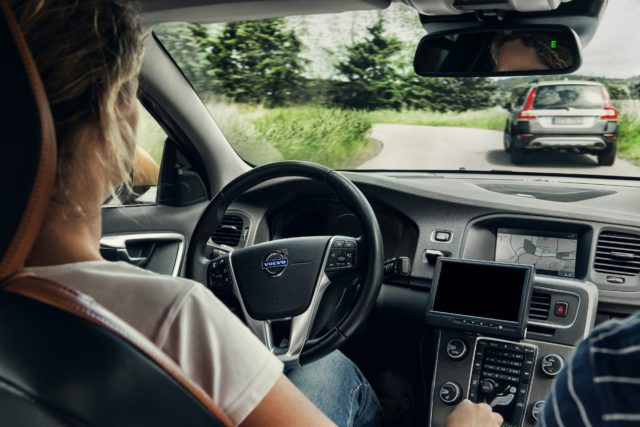
Cruise control has several advantages, chief among which is fatigue reduction. Allowing drivers to take their minds off keeping a constant speed allows them to focus more on steering and interacting with other traffic, as well as allowing them to stretch their legs and reduce muscle aches.
Advanced adaptive cruise control can prevent accidents thanks to its sensor array knowing where other vehicles are, and systems capable of reading speed limits can prevent drivers violating them and risking a ticket. It can also improve fuel efficiency.
However, it can be dangerous. Sophisticated systems, especially those paired with lane-keeping assistance tech, can encourage drivers to pay less attention when driving, increasing the risk of a collision.
Older systems were also very dangerous in the rain, on icy roads or on loose surfaces. That’s because the loss of traction in a wheel could lead the car to speed up rather than slow down, resulting in a total loss of control.
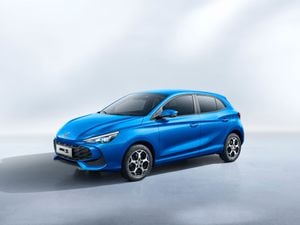
Oswestry man who lied to get pilot's job with airline admits fraud Plus Oswestry | 2 hours ago
Convicted killer who took drugs to 'dim the pain' went on theft spree - including bikes worth £10k Plus Telford | 2 hours ago
Video: Enjoy a first look inside Telford's brand new Danish lifestyle store Business | 2 hours ago
'Small, nurturing' primary school celebrates 'good' Ofsted rating after being told to improve Plus Education | 2 hours ago
Dazed dangerous driver rushing to date crashed into tree, causing cyclist to break shoulder Plus Crime | 2 hours ago

- Auto Reviews
All about Cruise Control: The Difference between Cruise Control and Adaptive Cruise Control
Oct 15, 2019 11:23 PM EDT | Staff Reporter
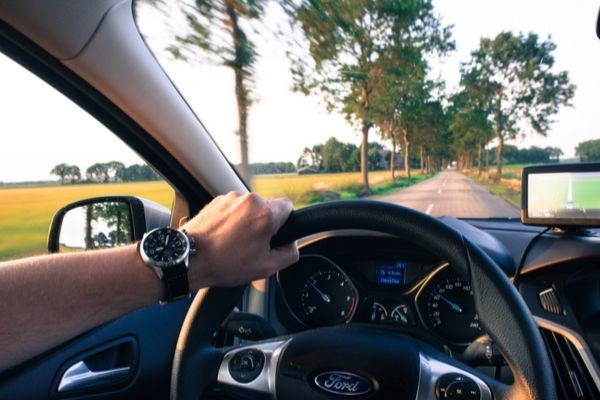
Most modern cars are full of electronic conveniences, that make driving easier. Now, cars are almost a no brainer to drive, and filled with plenty of driver aids. One of these functions is Cruise Control to reduce fatigue on long drives. For most drivers on road trips that will be for quite a distance. Stepping on the accelerator is rather inefficient, especially when travelling on long distances. Cruise control makes it easier to drive long distances! Most cars are equipped with it and are standard equipment in countries like the United States especially.
The wide expanse of the continental United States makes overland crossing with cars that have cruise control very practical. The valve which controls the throttle does not actively engage the actuator like normal driving. Precise electronic control via the car's electronic control unit (ECU). Most cars have sensors that are bundled with the car ECU. Sometimes, those who suffer from having Lead Foot will find cruise control a better way to control the car's speed!
Cruise control and Adaptive Cruise control By this time, cars are equipped with either Cruise control or Adaptive Cruise Control which are available as standard equipment. Setting up cruise control is done by setting speed and then to COAST which activates it. Just a tap on the SET/ACCEL will add a little speed to cruising, but a tap back will lower the speed. Stepping on the brakes will turn off cruise control automatically.
This operation is simple to do, but it needs active driver intervention. Driving with cruise control is just a simple driver aid that is very basic. Though the driver needs to be alert when using it. Convenient and keeps a Lead Foot from over speeding though it needs to be used with discretion. Not advised for city driving or areas that are dense with cars or people.
A newer type of this system has been developed and it is Adaptive Cruise Control. One of the biggest drawbacks of the older cruise control is that there's no way to stop the car from hitting the one in front! But ACC has increased safety factor when in use and even more reliable! It works the same way as Cruise control but with several major differences.
The ACC system adjusts automatically to the distance of the car in front to avoid an accidental collision. Utilizing radar sensors measures the distance from the car and engages the brake automatically. Coupling the Autonomous Braking System with the ACC enhances safety better. Upgrading the cruise control to ACC is made possible by linking the ECU to external sensors.
Next time, when going on long trips or short ones in the city. Using adaptive cruise control allows easier driving, but it is the same function with upgrades! Just make sure to know how it works before using it. Both work with the same principle but the ACC is far better because it minimizes instance of crashing into the car in front.
See Now: OnePlus 6: How Different Will It Be From OnePlus 5?
Related Articles

NHTSA Investigates Random Braking in Honda CR-v and Accord: 1.7 Million Units in...

Manual vs. Automatic: Which Gear is Better for Winter Driving?

https://autoworldnews.com

BY 2022 AUTOMATIC EMERGENCY BRAKING WILL BECOME STANDARD

HERE Debuts Cloud-Based Mapping Service For Improved Automated Driving

Important Car Insurance Policies to Keep in Mind

The Three Best 3D Printing Pens

Are You Struggling with Car Repayments?

What Documents Do I Need for a Car Finance Application?
Join the Conversation

Hyundai to Invest $16.1 Billion for EV Business; Sets Annual Sales Goal of 1.87M Electric Cars by 2030

World's Most Expensive and Most Heavily-optioned Porsche 928 GTS is Coming Home to the U.S.

Major Boost as Tesla Giga Berlin Facility in Final Phase of Approval Process; Delivery Event Set This Month

Audi Looking for e-tron Electric Vehicles to Spur Car Brand's Growth in India in 2022

Toyota Offers Free EV Charging to Owners of 2023 bZ4X After Partnership Agreement with EVgo

2022 Suzuki Baleno Finally Unveiled in India: What are the Specs and Features of this City Car?

Can a Private Seller Be Liable for a Car Accident?

Insurance for New Drivers: A Comprehensive Guide to Your Car Insurance Policy

Catalytic Converter Costs Unveiled: What You Need to Know

Optimizing Your Auto Business for Success

3 Crucial Questions to Ask When Buying Business Vehicles

How to Get Your Car Ready for Camping

How to Tune Your Racing Carburetor

2022 Lamborghini Countach LPI 800-4 Review: Here Are Its Price, Top Speed, Specs, Interior

The End of Speeding? This is How ALPR Cameras Help

Sure Stop: 5 Tips For Choosing The Right Braking System
- Cars for Sale
- Property for Rent
- Property for Sale
- Classifieds
- Place Your Ad
- Parts & Repairs
- Market Trends
- Laws & Regulations
- Public Transport

Adaptive Cruise Control in Cars
Adaptive Cruise Control (ACC), also known as Dynamic cruise control, is an advanced version of cruise control. It is used in modern vehicles to maintain distance from the preceding vehicle. Adaptive cruise control can control the speed and braking system to avoid collisions. The normal cruise control system can only maintain the speed pre-set by the driver. However, the adaptive cruise control system can accelerate or brake as per the situation, after the pre-set speed. Following we will discuss how to use adaptive cruise control along with its features.
How it Works
The ACC works differently from ordinary cruise control systems . It works on a pre-set speed limit. It adjusts the vehicle speed according to the traffic and preceding cars. usually works on the basis of sensors that are located at the front of ACC. These sensors continuously monitor the road and preceding vehicles.
If a slower speed vehicle comes in front of the car it will reduce the acceleration or engage the braking system. Similarly, if a vehicle changes lanes or speeds up, the Adaptive Cruise Control will accelerate accordingly.

However, if the road is empty it will drive the car at the maximum speed set by the driver. It can be activated at a speed of 30 km/h or above. Whereas, adaptive cruise control with stop and go feature can be activated below 30 km/h.
Types of Adaptive Cruise Control
The adaptive cruise control with stop and go feature is getting modernised with time and new technologies are being used in the system. Following are the different types of ACC currently used in commercial vehicles.
Laser-Based
The laser-based ACC works on laser technology. A big black box is placed in the front grille of the vehicle to detect any potential hazard or car. However, cruise control failure can occur in rainy weather, as it often stops functioning during rain.
Radar-Based
It is one of the oldest and most efficient technologies used in ACC. small sensors are placed on the front and rear bumper of the car to monitor the road. These sensors work in a collaborative manner and over all sides of the vehicle. The sensor position and shape can vary from model to model.

Multi-Sensor Based
The multi-sensor ACC utilizes more than one type of sensor to provide a detailed picture of the car’s surroundings. It can use GPS information or a camera to capture even minute details. This ACC can provide complete geographical information of the surrounding car.
Binocular Computer Vision System
The Binocular Computer Vision System ACC is completely based on the footage collected from the camera. These cameras are generally located at the back of the rearview mirror and capture all the elements in front of the car.
Predictive Systems
The predictive ACC is completely dependent on the sensory data collected. It prefers passenger safety and may stop or slow down the vehicle if it senses any danger. It can even stop the vehicle if it detects a car changing lanes in speed.
How to Use Adaptive Cruise Control
The ACC is an advanced feature of modern vehicles, but its effectiveness depends on multiple external factors. See the following useful tips to ignore any discomfort while using ACC.
- ACC may not work properly in extreme weather conditions like rain or fog. Make sure not to completely rely on ACC in these climatic conditions.
- Always check your user manual to ensure that ACC will slow down your vehicle or not.
Where to Use Adaptive Cruise Control
If you are travelling on the freeways or highways often then adaptive cruise control is the best feature for your car. It can control the acceleration and braking system letting the driver focus on other driving essentials. However, it is different from self-driving cars , it requires your attention and control. It is worth it if you are willing to control and take over in case of an emergency.

Adaptive cruise control is an example of modern convenience and luxury in vehicles. If you are also interested in using this technology, browse through these used cars for sale in the UAE .
List of Cars With Adaptive Cruise Control
Following is the list of cars with adaptive cruise control that are advanced and can cater to all the needs.
- Buy second-hand Mazda 3 2021 for sale in the UAE
- Purchase used Nissan Maxima 2020 for sale in the UAE
- Buy used Hyundai Sonata 2021 for sale in the UAE

How to reset adaptive cruise control?
To reset adaptive cruise control (ACC):
- Stop the vehicle.
- Access ACC settings (usually through the infotainment system).
- Find the reset or calibration option.
- Follow on-screen prompts or adjust settings.
- Test the ACC by driving.
For detailed instructions, consult your vehicle’s owner’s manual.
How to use adaptive cruise control?
To use adaptive cruise control (ACC):
- Activate ACC.
- Set your desired speed.
- Set the following distance.
- Engage ACC.
- Keep hands on the wheel and monitor the road.
- ACC adjusts the speed as needed.
- Deactivate ACC by tapping the brakes or using controls.
Does adaptive cruise control work in fog?
Adaptive cruise control may have limited functionality in foggy conditions due to reduced sensor effectiveness. In thick fog, it may not work properly and should not be solely relied upon for driving.
Stay tuned to UAE’s top auto blog for more information on cruise control.
Related Posts

Glow Plug in a Car – What Is It and How It Works

Reasons Your Car Heater Isn’t Working Properly

Benefits of Upgrading a Car Lighting System

All About Car Fuse Box


IMAGES
VIDEO
COMMENTS
On a car with adaptive cruise control (ACC), you switch on the system, then you can raise or lower your speed as desired, and the car will accelerate to that set speed. These systems use either ...
Radar Adaptive Cruise Control. Uses radio waves in the 24 GHz or 77 GHz frequency bands. Excellent range (160m+) and unaffected by weather. Distributed beam provides wide field of view. Cannot identify shape and classification of objects. Overall the most robust and widely adopted ACC technology.
Active cruise control; Dynamic cruise control; ... This type of sensor can look different depending on the design and model of the car. Laser-Based Systems. As mentioned by Electronic Design, ...
Subaru: Adaptive Cruise Control, Adaptive Cruise Control with Lane Centering; EyeSight. Mercedes-Benz: Active Distance Assist Distronic. BMW: Active Cruise Control, Active Cruise Control with Stop ...
Adaptive cruise control (ACC) is a type of advanced driver-assistance system for road vehicles that automatically adjusts the vehicle speed to maintain a safe distance from vehicles ahead. As of 2019, it is also called by 20 unique names that describe that basic functionality. ... BMW introduced radar "Active Cruise Control" in Europe on the ...
Adaptive cruise control (ACC) is like traditional cruise control, but smarter. ACC systems allow you to set a desired speed until your vehicle encounters slower-moving traffic. Then it will brake ...
Yes. Active Cruise Control was designed with high-volume commuter traffic in mind. Where speeds are constantly changing from 100km/h to a dead stop with not much warning. It only takes one driver ...
Adaptive cruise control (ACC) is an intelligent form of cruise control that slows down and speeds up automatically to keep pace with the car in front of you. The driver sets the maximum speed ...
2. 2018 Mazda 3. The 2018 Mazda 3 provides drivers with an adaptive cruise control system that detects rear-cross traffic and blind-spot monitoring, great for making safe lane changes. It also ...
Simple to use, all you need to do is turn on the system in your vehicle, reach your desired cruising speed, and set it. The system then assumes control of the accelerator, maintaining the set ...
Adaptive cruise control (ACC) is an intelligent form of cruise control that allows vehicles to speed up and slow down automatically in order to keep pace with the traffic ahead. ACC is also known as autonomous cruise control, active cruise control, intelligent cruise control and radar cruise control. But regardless of what it's called, it's ...
There are a few different types of adaptive cruise control on the market. Some systems are radar-based (these are the most commonplace), while others use cameras or a combination of radar and cameras.
Adaptive cruise control or Active Cruise Control (ACC) is an advanced driver assistance system (ADAS) that automatically adjusts a vehicle's speed when there are slow-moving vehicles ahead, with the aim of maintaining a safe following distance. When the road ahead is clear, ACC automatically accelerates to your pre-set speed.
Adaptive cruise control (ACC) is an enhancement of conventional cruise control. ACC automatically adjusts the speed of your car to match the speed of the car in front of you. If the car ahead slows down, ACC can automatically match it. Once the car ahead moves out of your lane or accelerates beyond your car's set speed, your ACC allows your ...
Here is a step-by-step breakdown of how cruise controle works: The driver activates cruise control by pressing a button or flipping a switch on the dashboard or steering wheel. The system uses electronic sensors to measure the vehicle's speed and other factors such as throttle position, engine load, and road grade.
5 - Watch the road and steer. Watching the road is essential when cruise control is engaged. Cruise control is not a substitute for a human driver and will require supervision at every step. If you are using a semi-autonomous system, you will not need to steer but will need to keep at least one hand on the wheel for safety measures.
Cruise control consists of an up/down (or +/-) control, as well as a 'Set' button, a 'Recall' button and sometimes an on/off button. The driver brings the car up to their desired speed, and if the system is switched on, pressing 'Set' will store that speed in the car's memory. The vehicle will then take control of the accelerator ...
Adaptive Cruise Control (ACC) is an intelligent driver assistance feature that works as an enhancement to traditional cruise control. Using a system of advanced sensors such as radar and cameras, ACC determines the speed and conditions of surrounding traffic and automatically adjusts cruising speed to maintain a safe distance within the flow of traffic.
Basic systems are usually operated by a control either on the steering wheel or a steering column stalk. Cruise control consists of an up/down (or +/-) control, as well as a 'Set' button, a ...
Cruise control and Adaptive Cruise control By this time, cars are equipped with either Cruise control or Adaptive Cruise Control which are available as standard equipment. Setting up cruise control is done by setting speed and then to COAST which activates it. Just a tap on the SET/ACCEL will add a little speed to cruising, but a tap back will ...
Whereas, adaptive cruise control with stop and go feature can be activated below 30 km/h. Types of Adaptive Cruise Control. The adaptive cruise control with stop and go feature is getting modernised with time and new technologies are being used in the system. Following are the different types of ACC currently used in commercial vehicles. Laser ...
Common cruise control icon on dashboards specified by ISO-7000-2047, ISO 2575:2010, and ISO 6727. Another icon exists for the more modern adaptive cruise control, but some cars also use the cruise control icon for the speed limiter function, which has no standard icon.. Cruise control (also known as speed control, cruise command, autocruise, or tempomat) is a system that automatically controls ...
BMW's Active Cruise Control allows you to set the distance to be maintained from the vehicle in front of you while driving. To decrease or increase simply adjust distance via controls on the left side of the steering wheel. The distance will be visible via the instrument cluster on your dashboard.